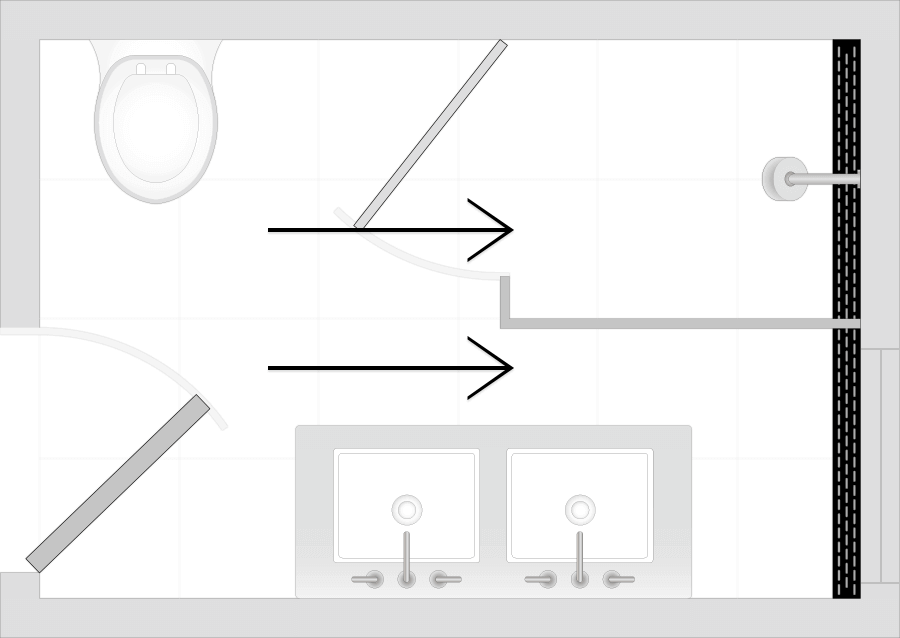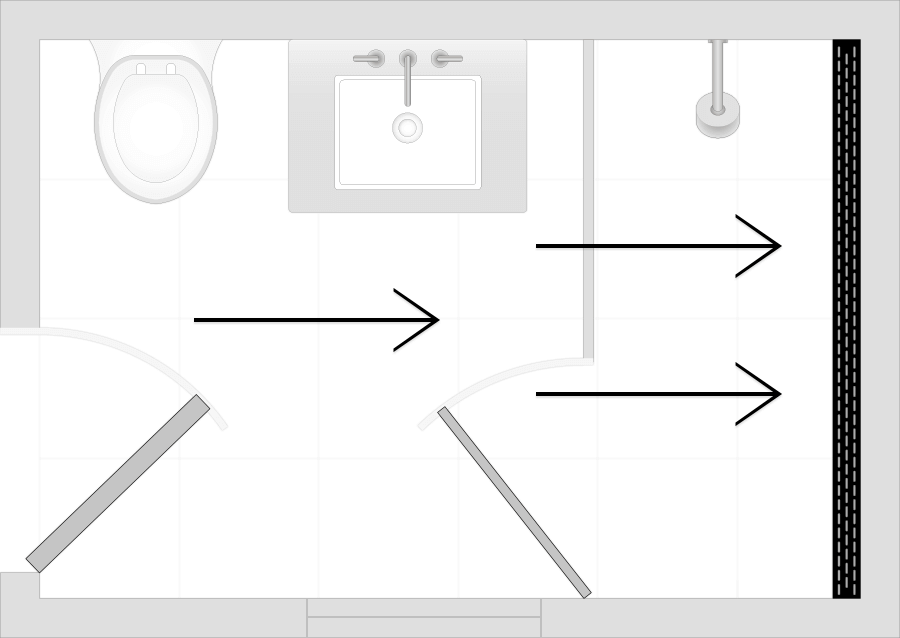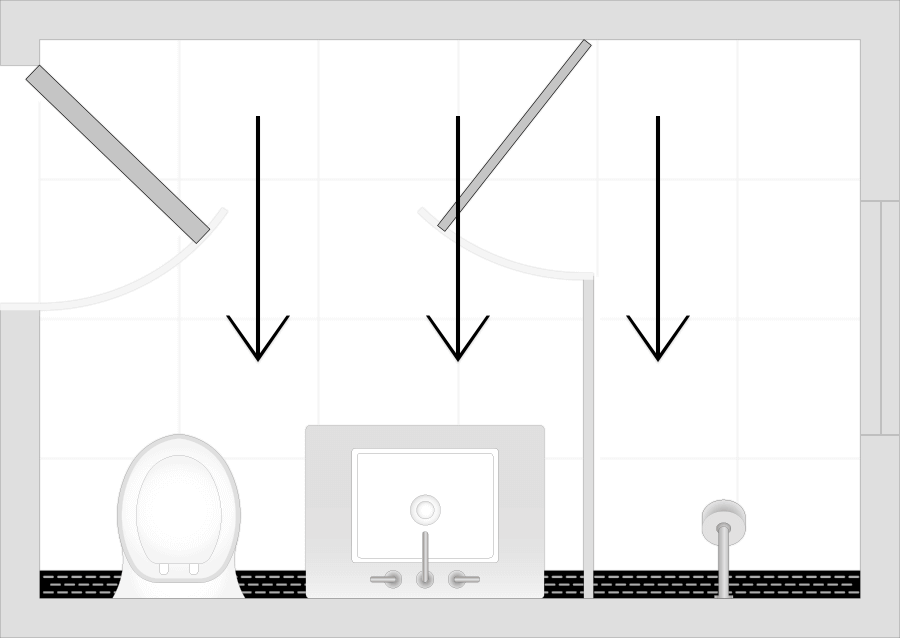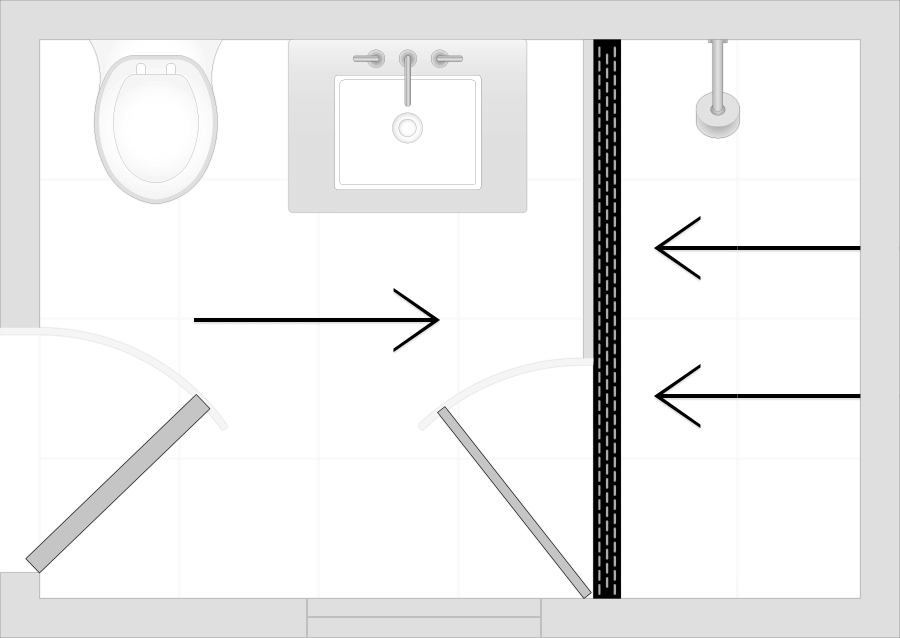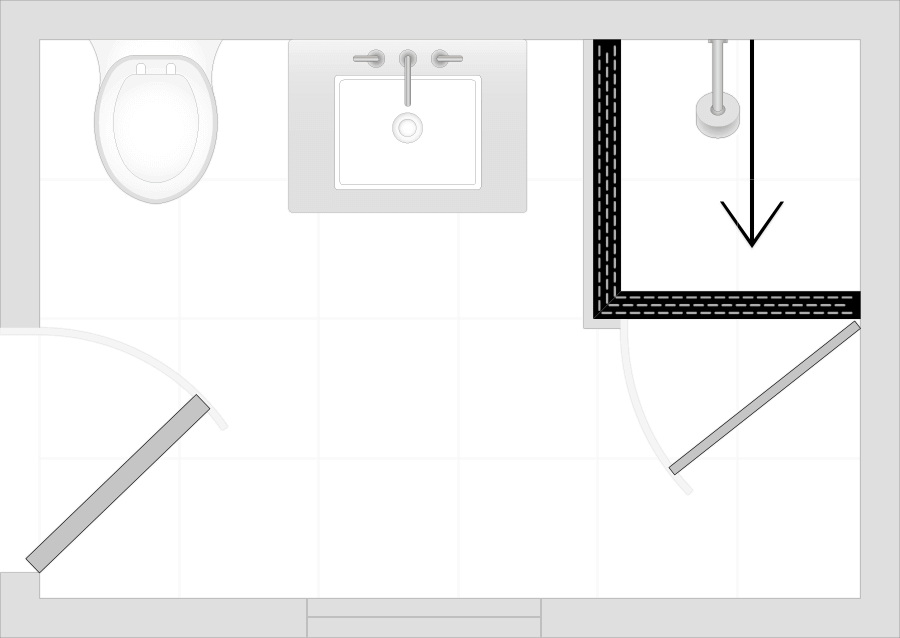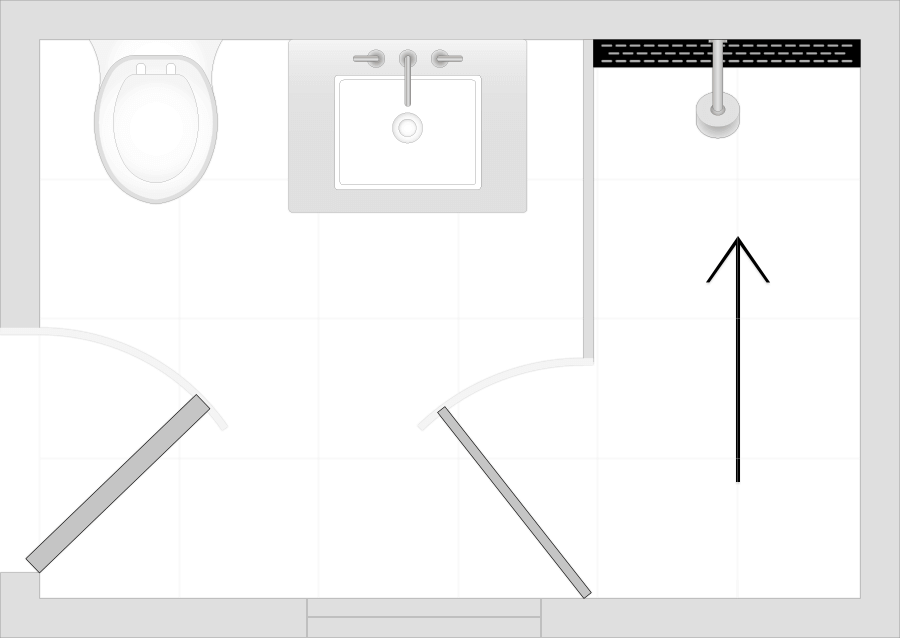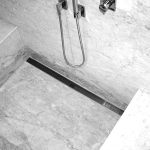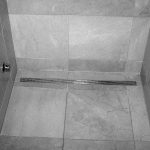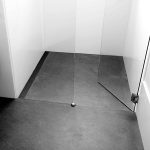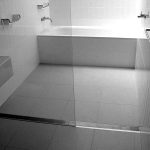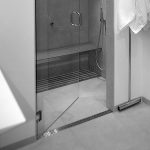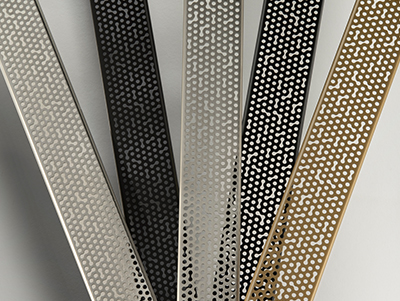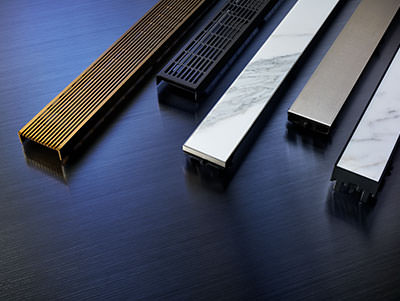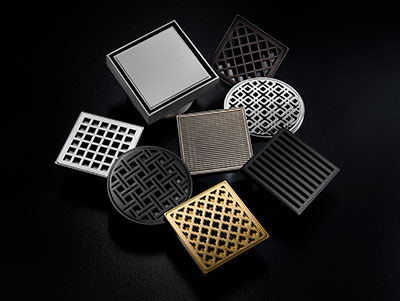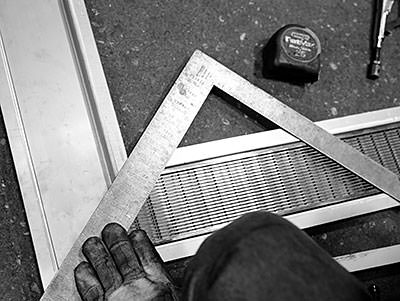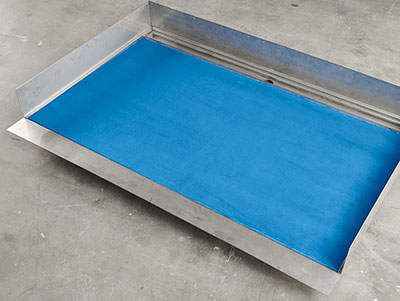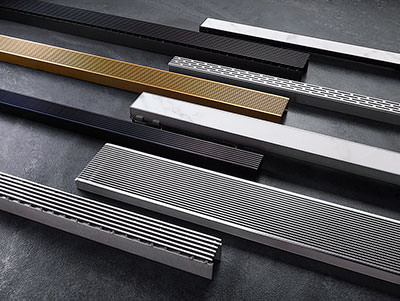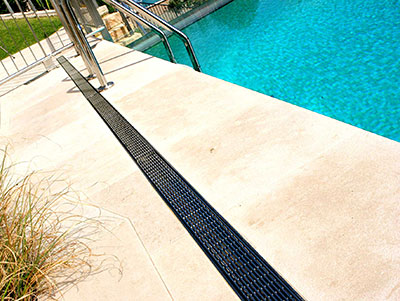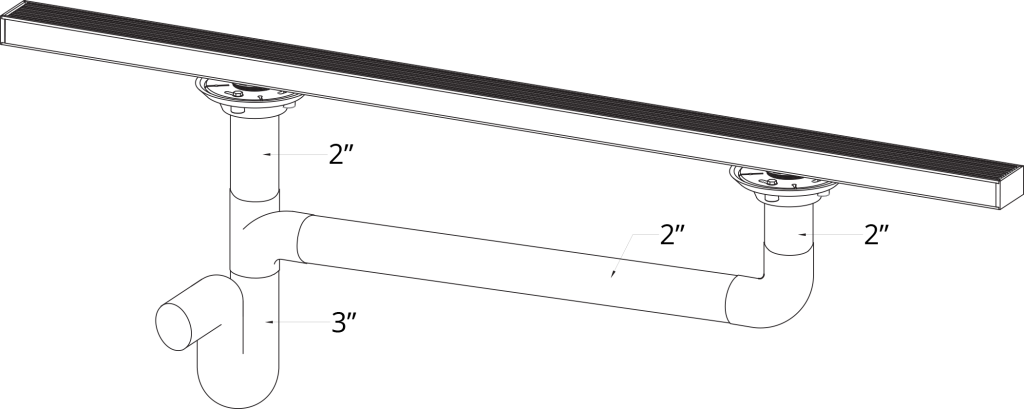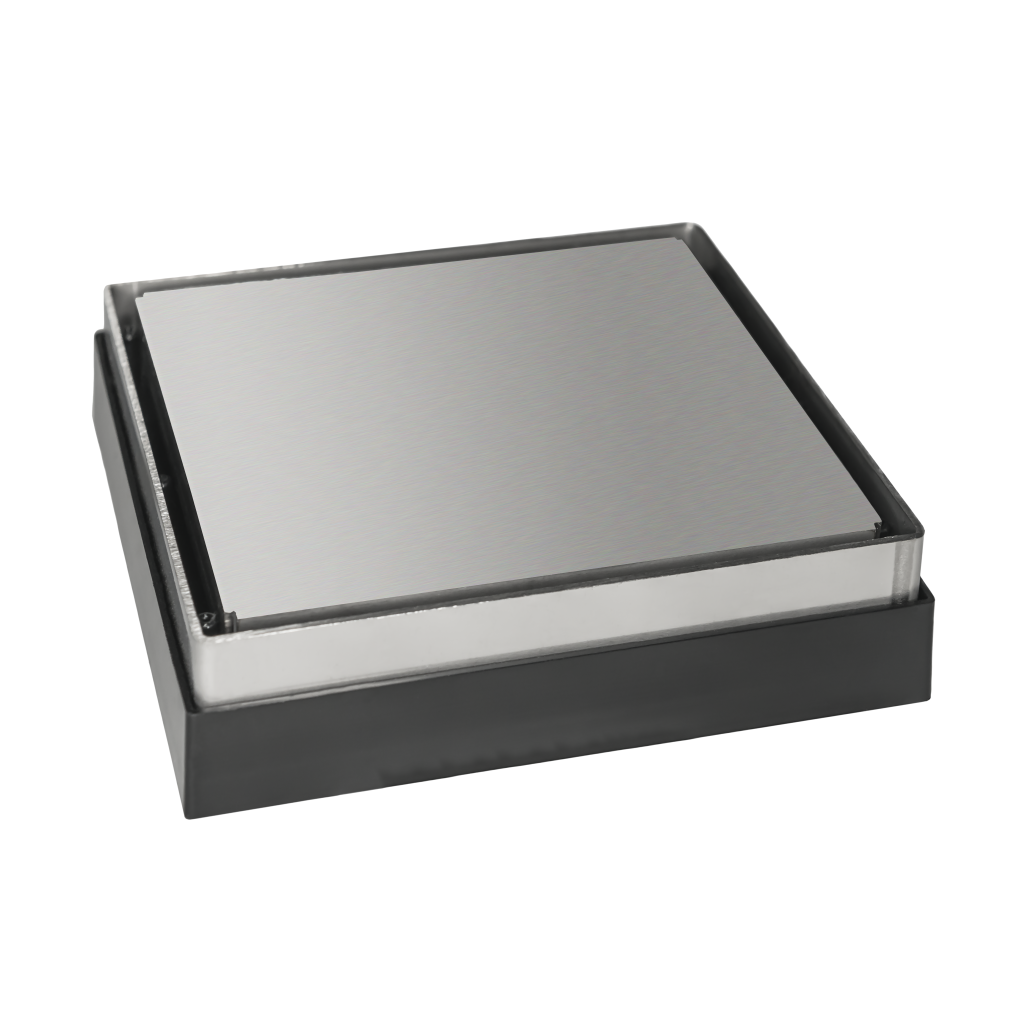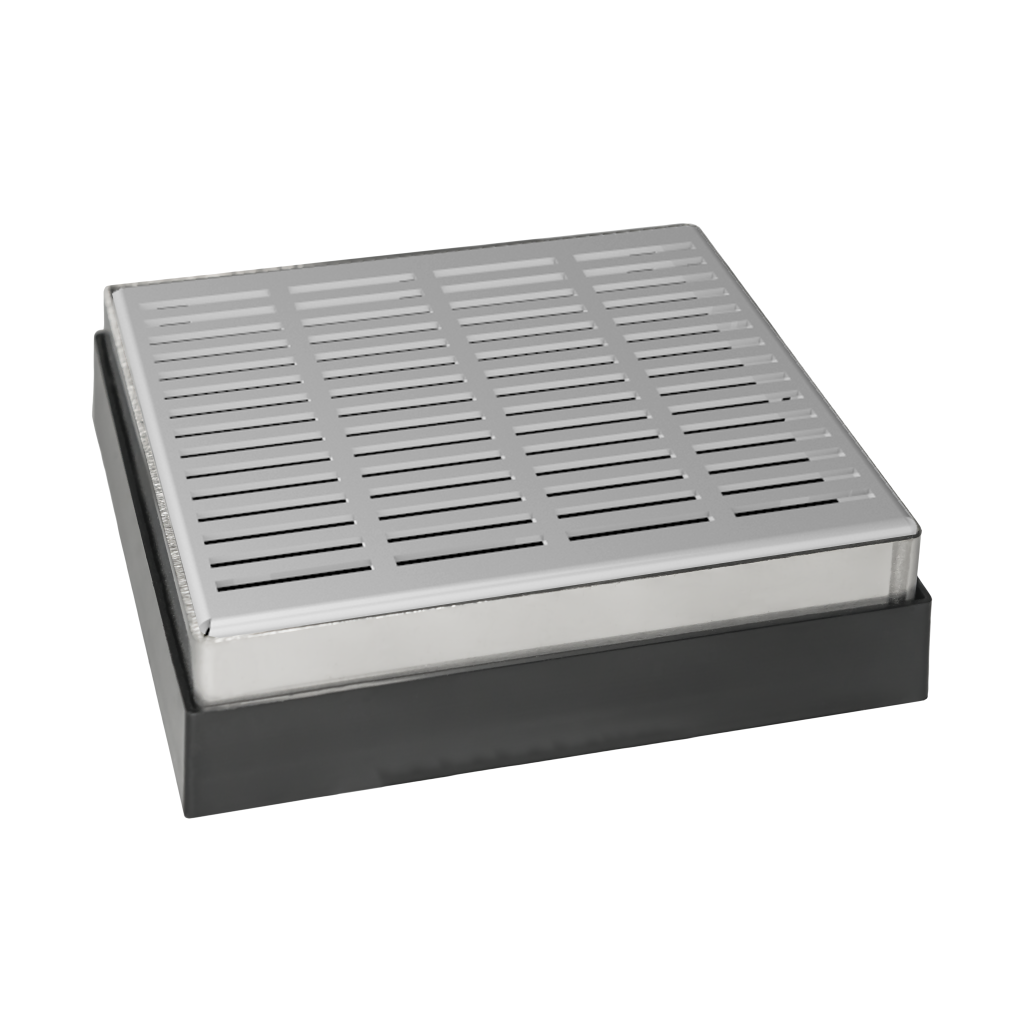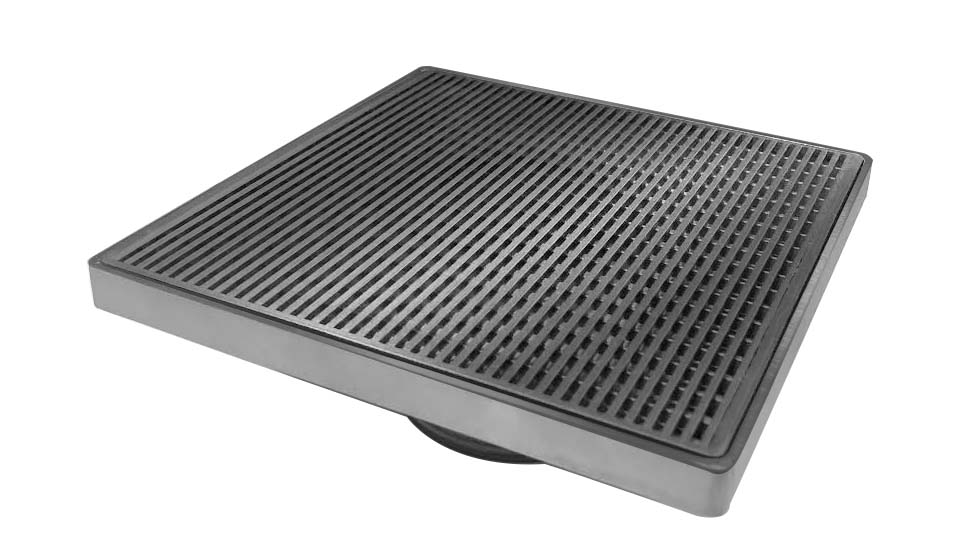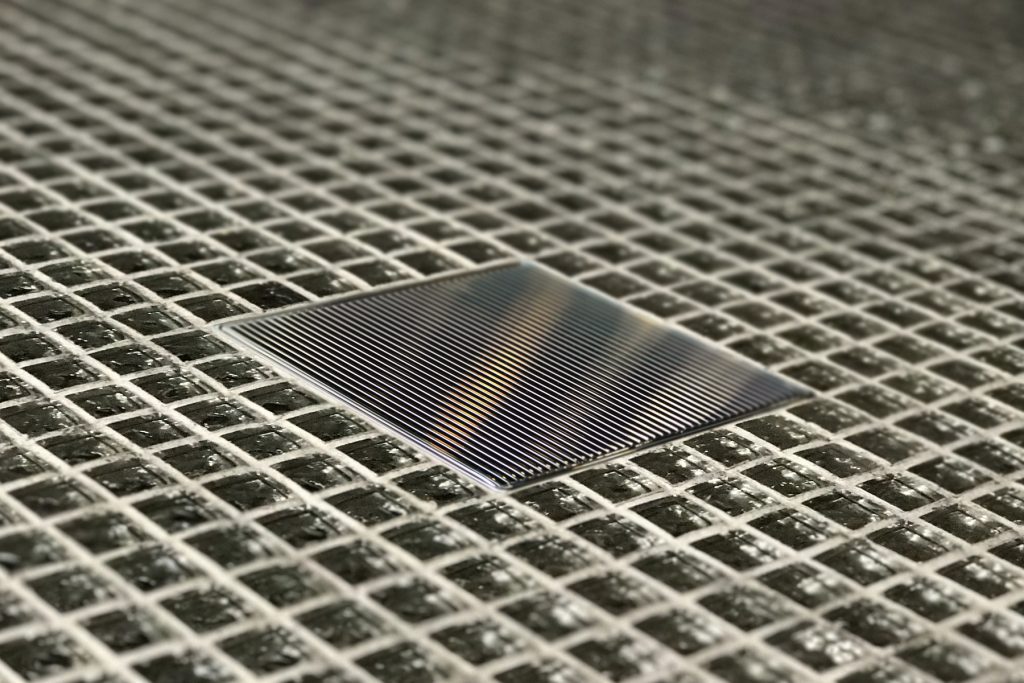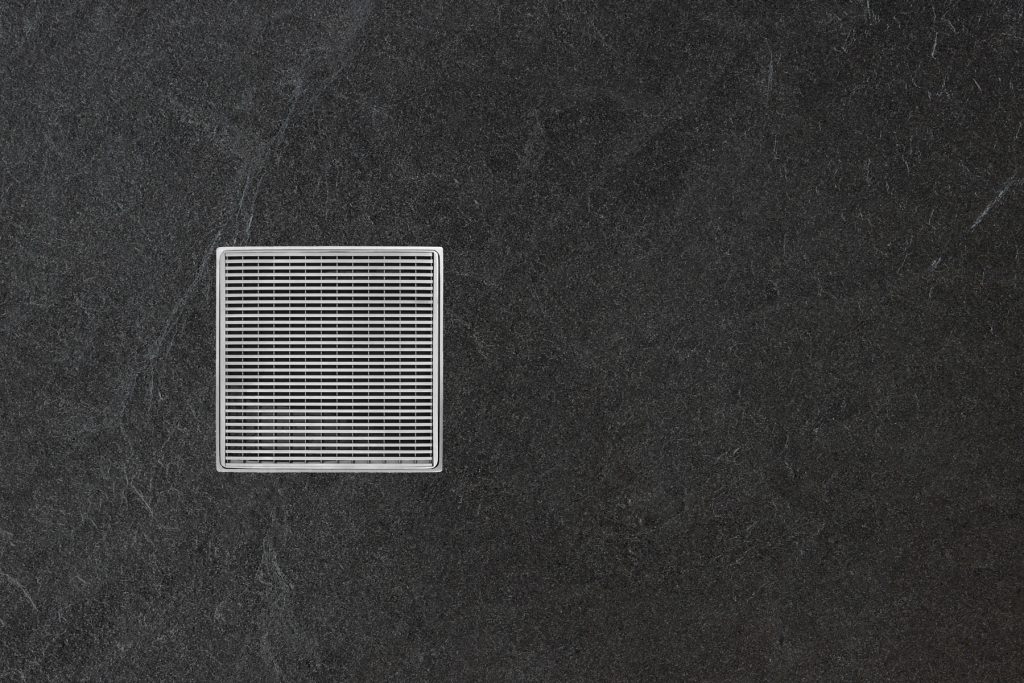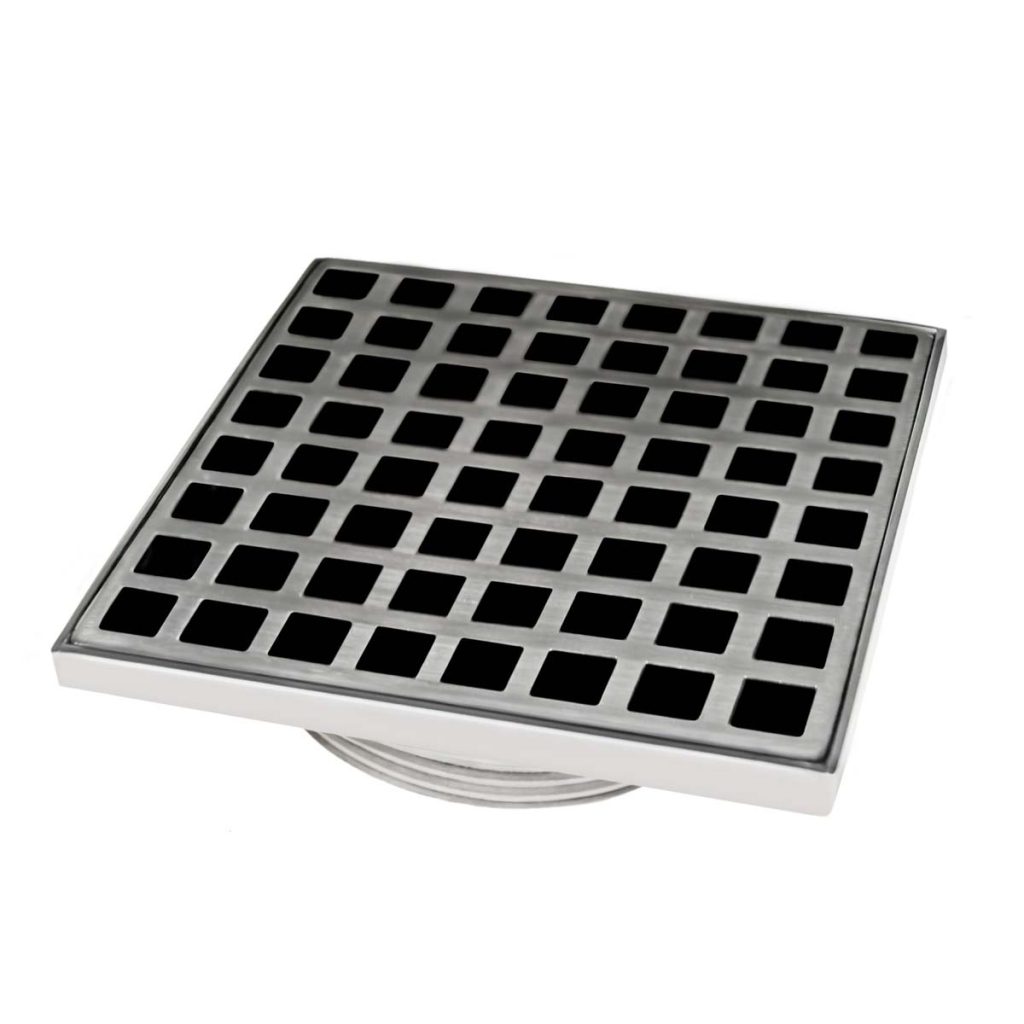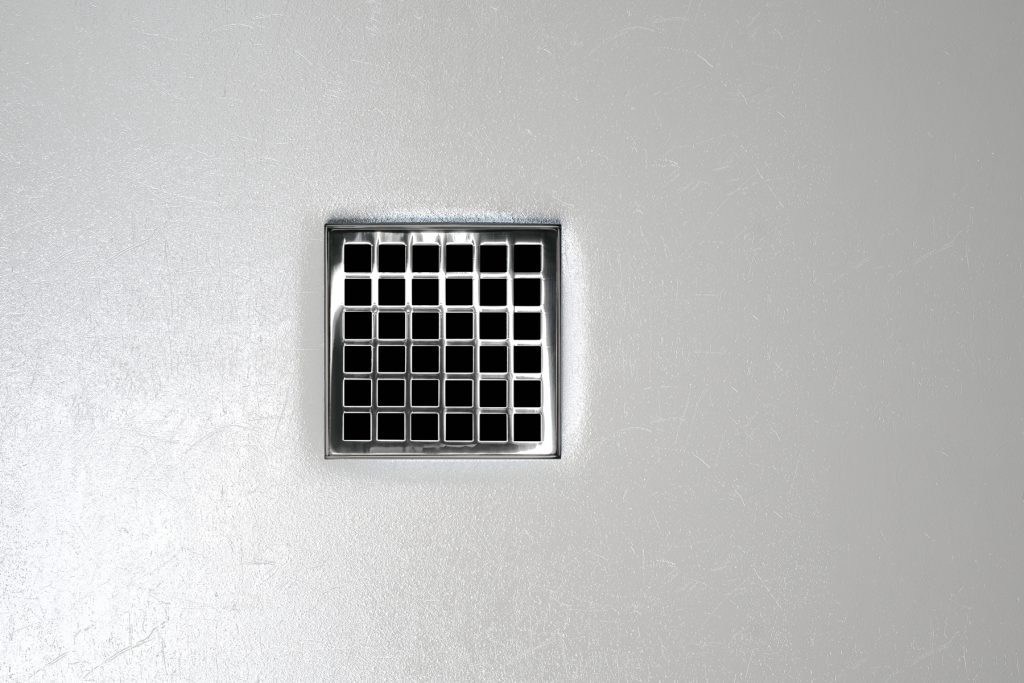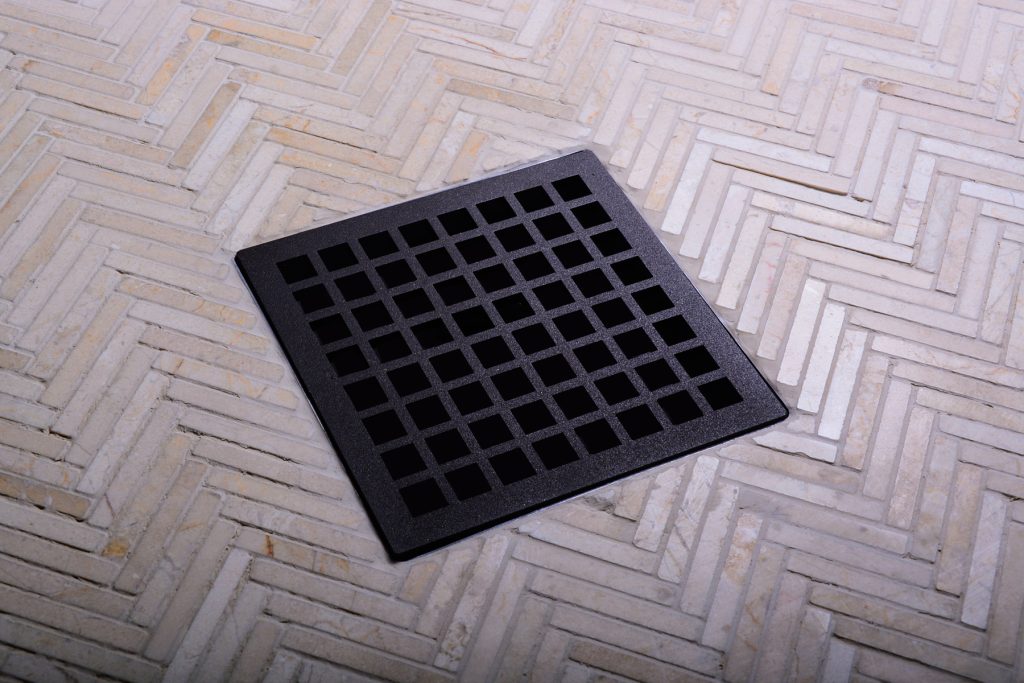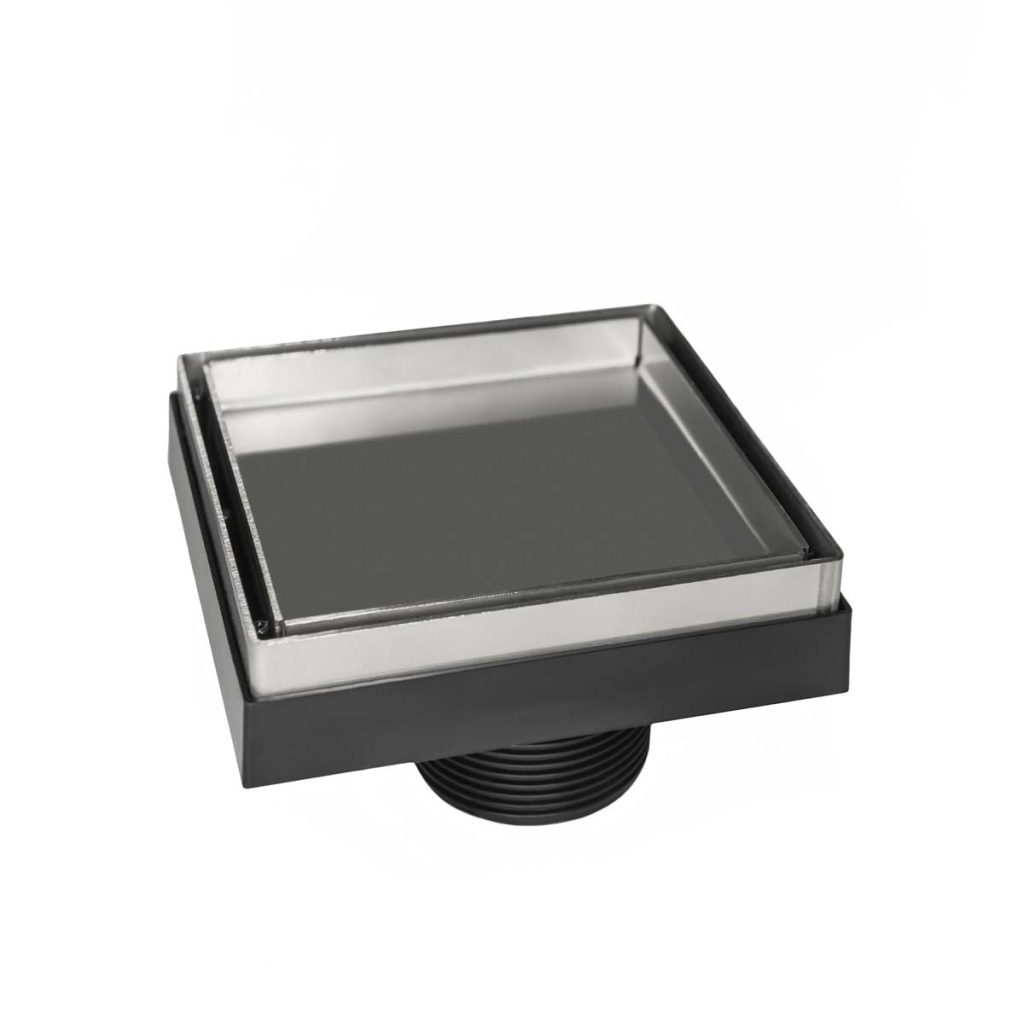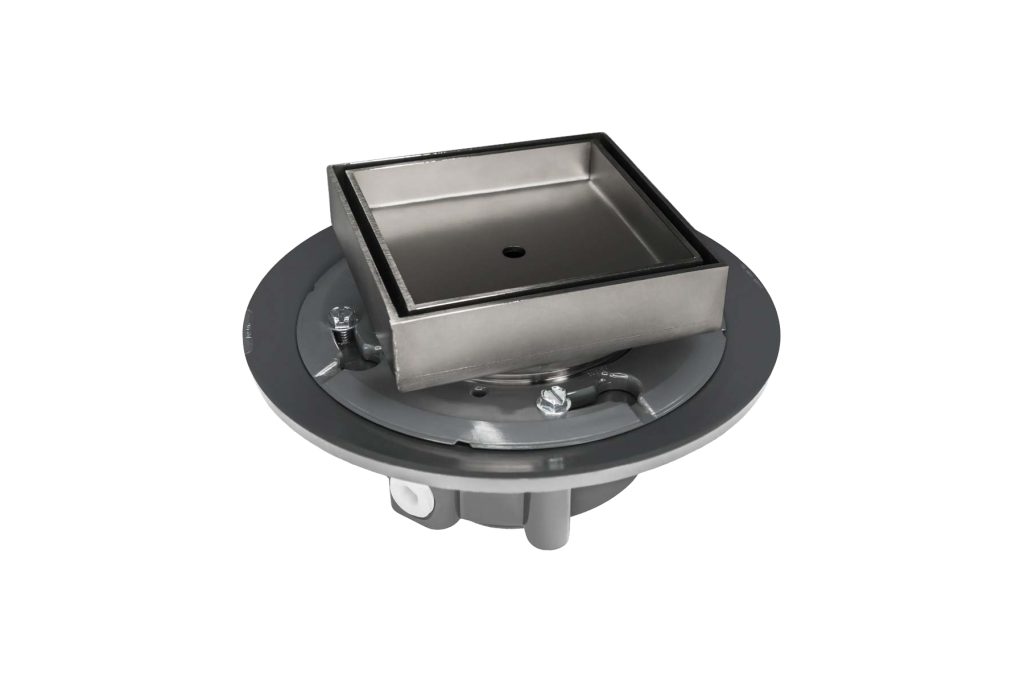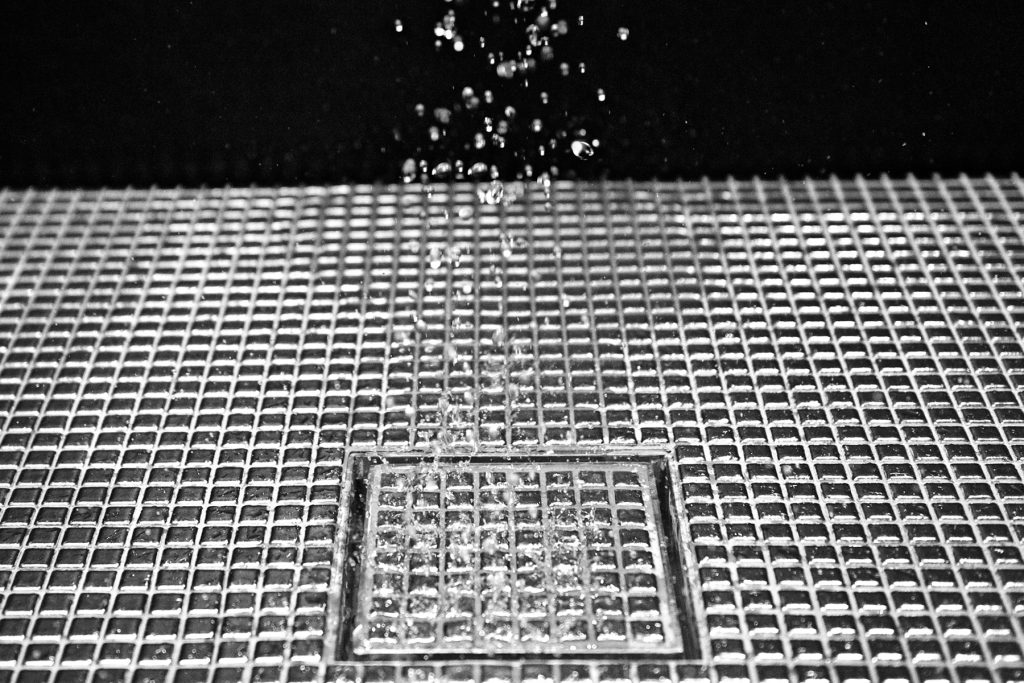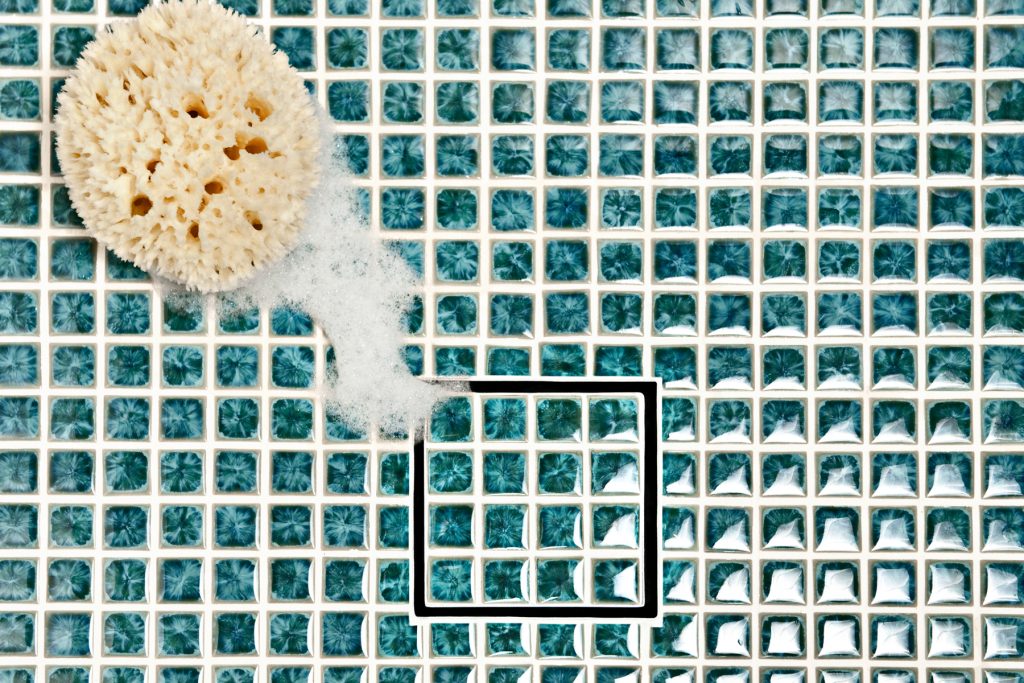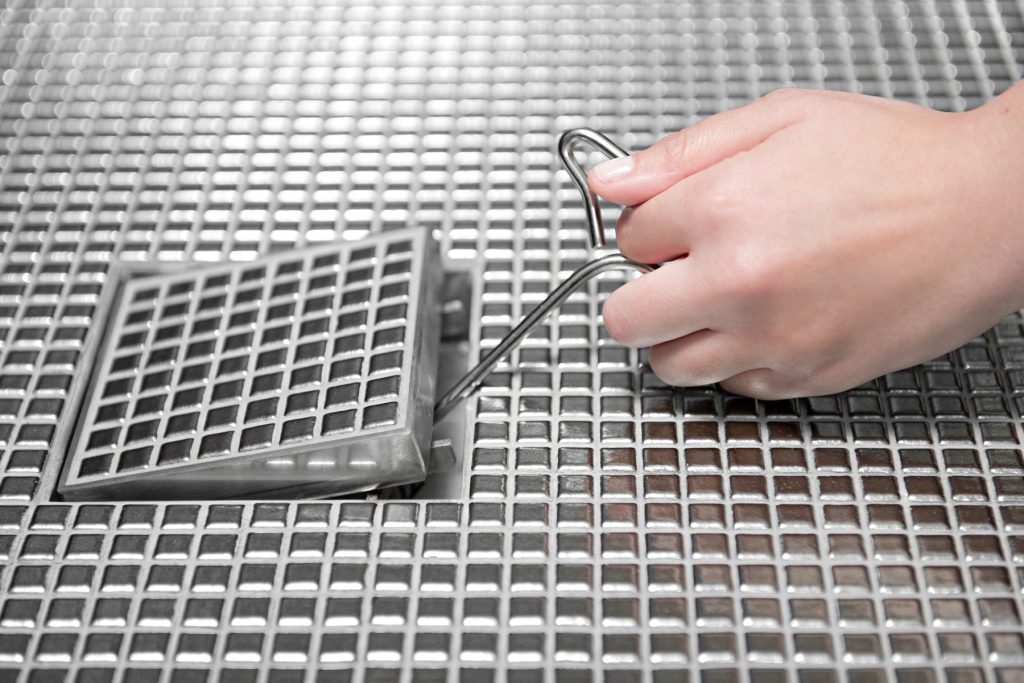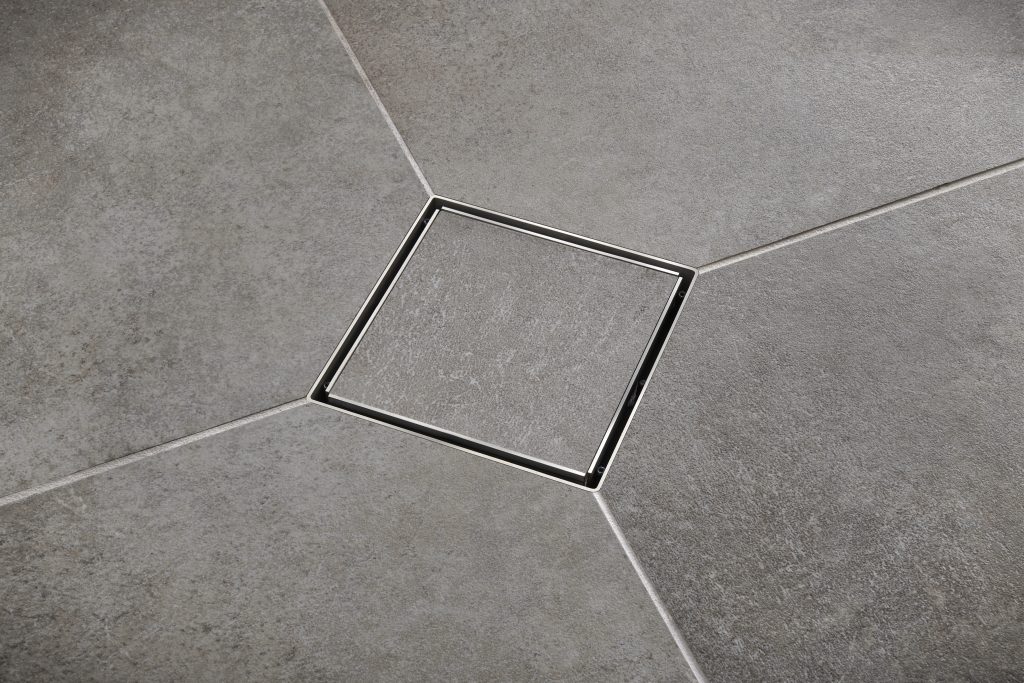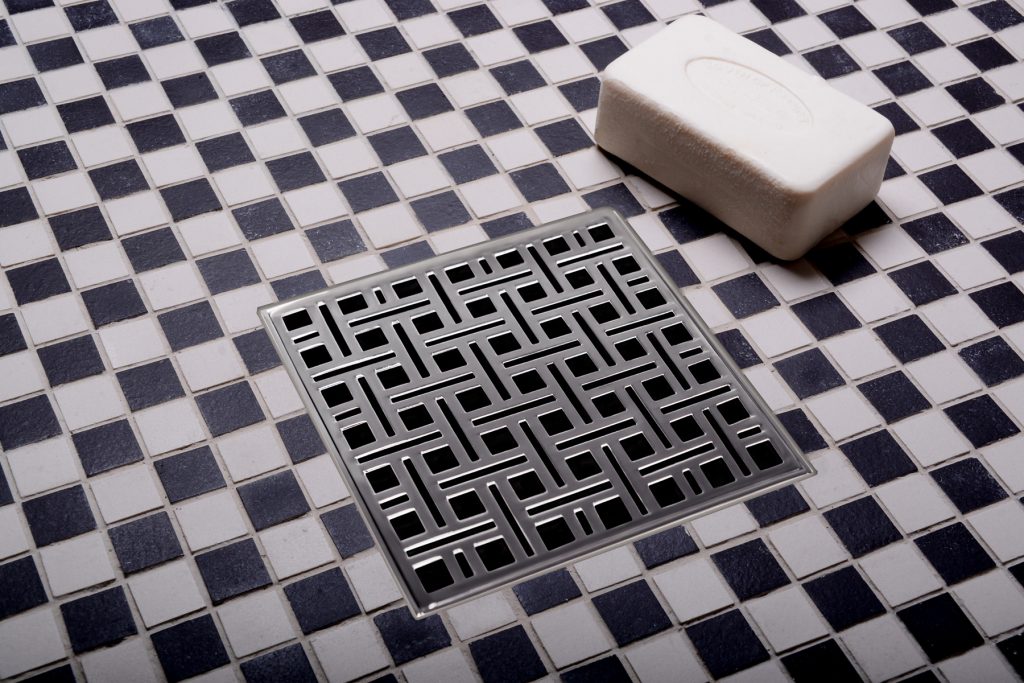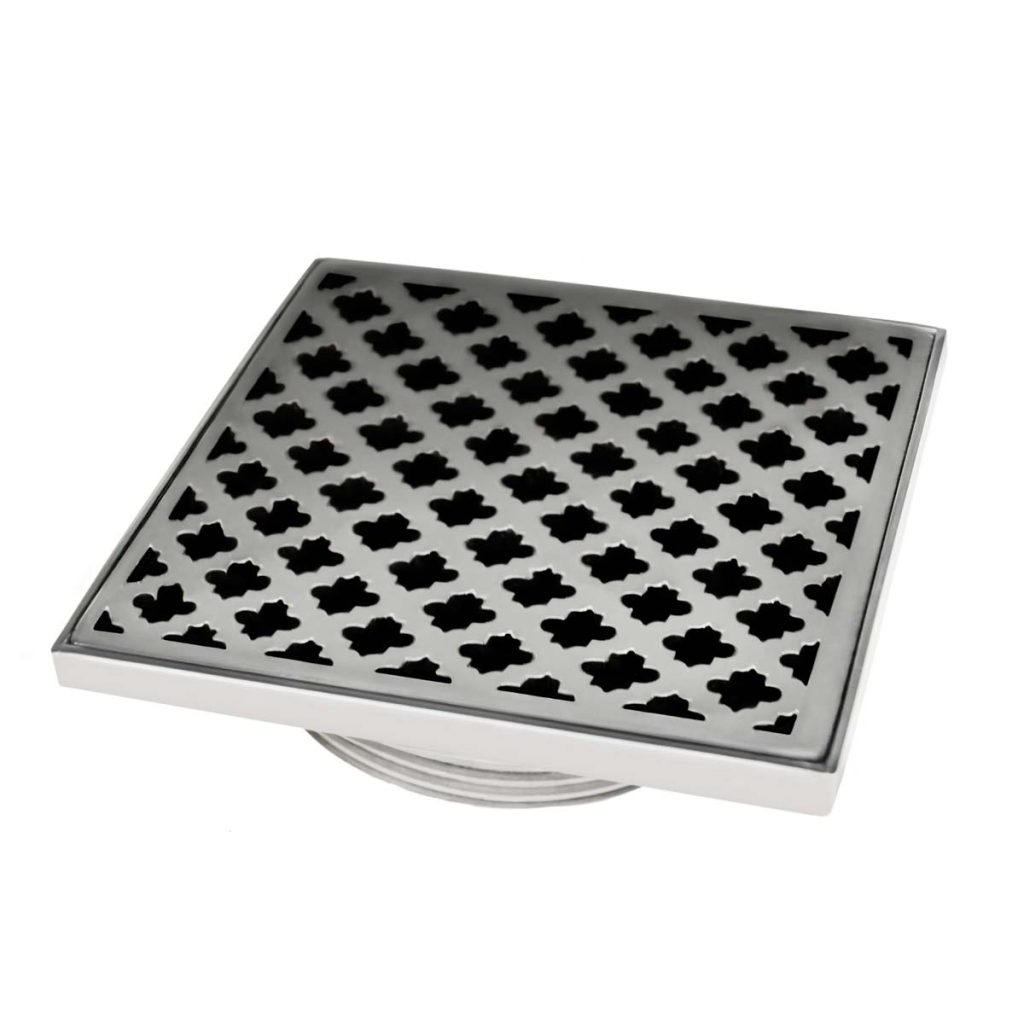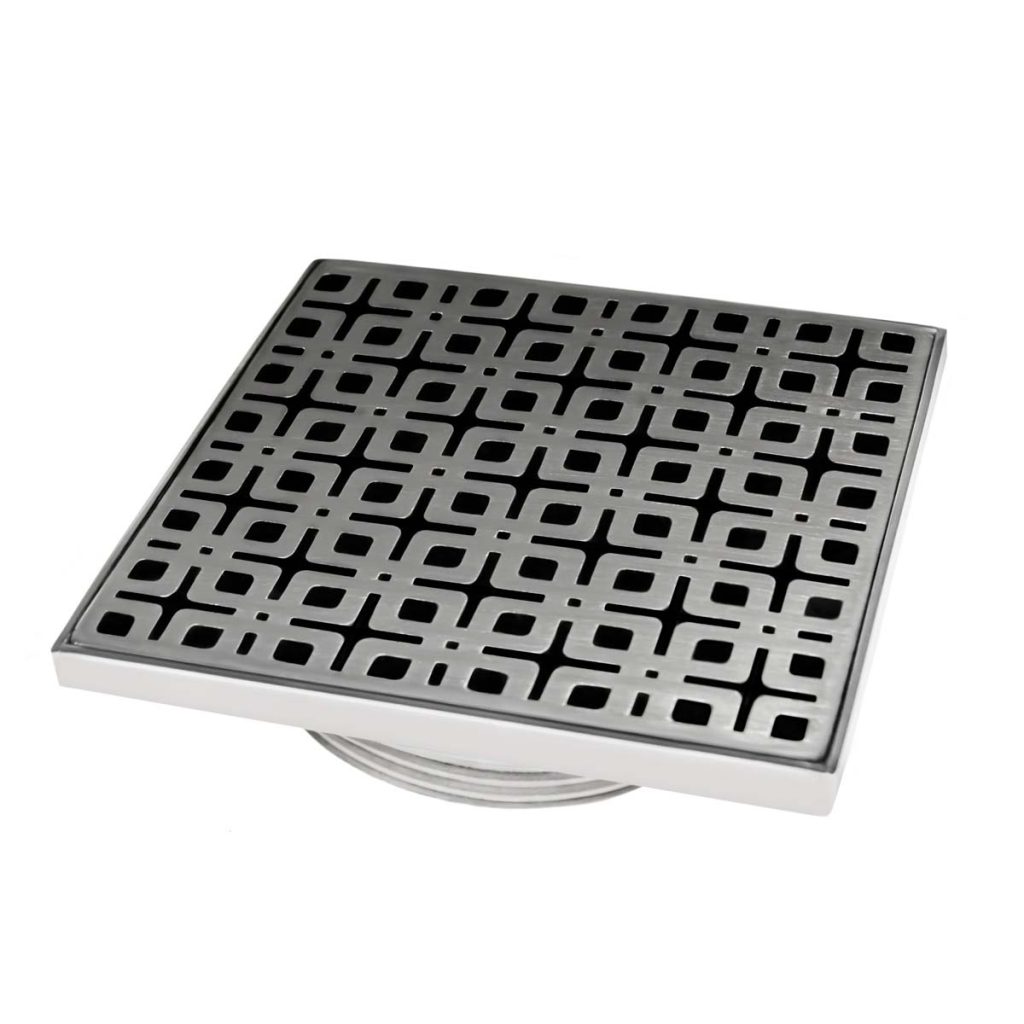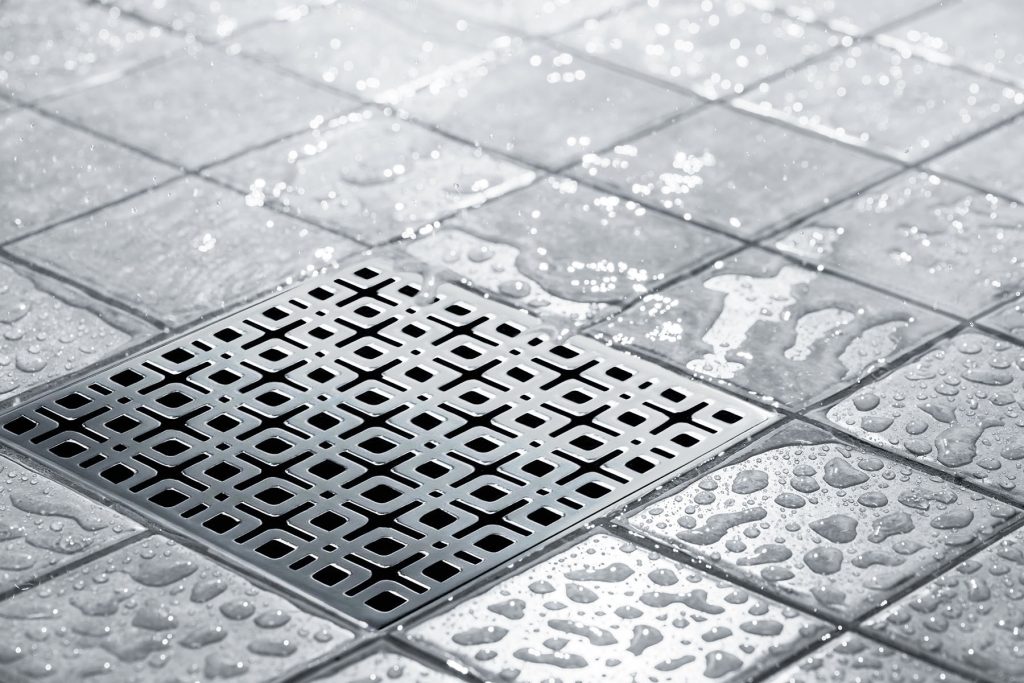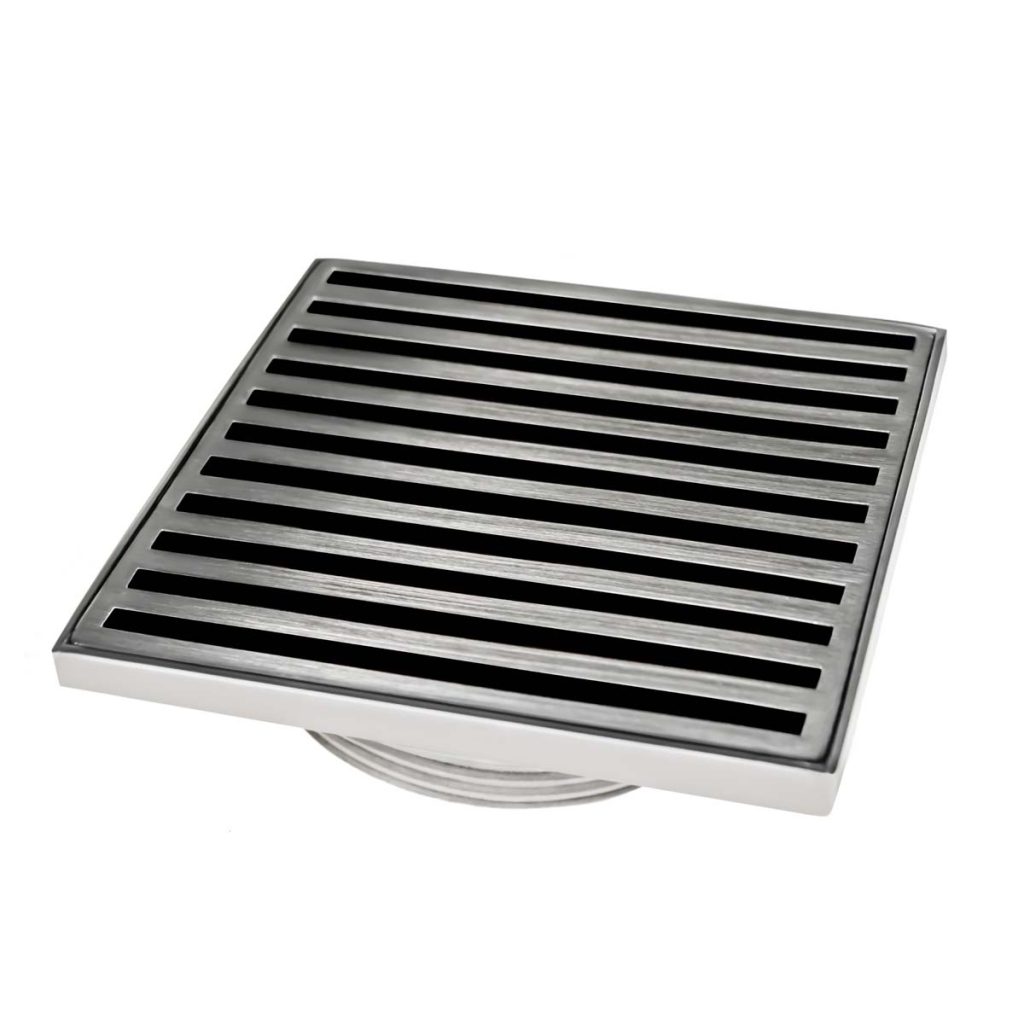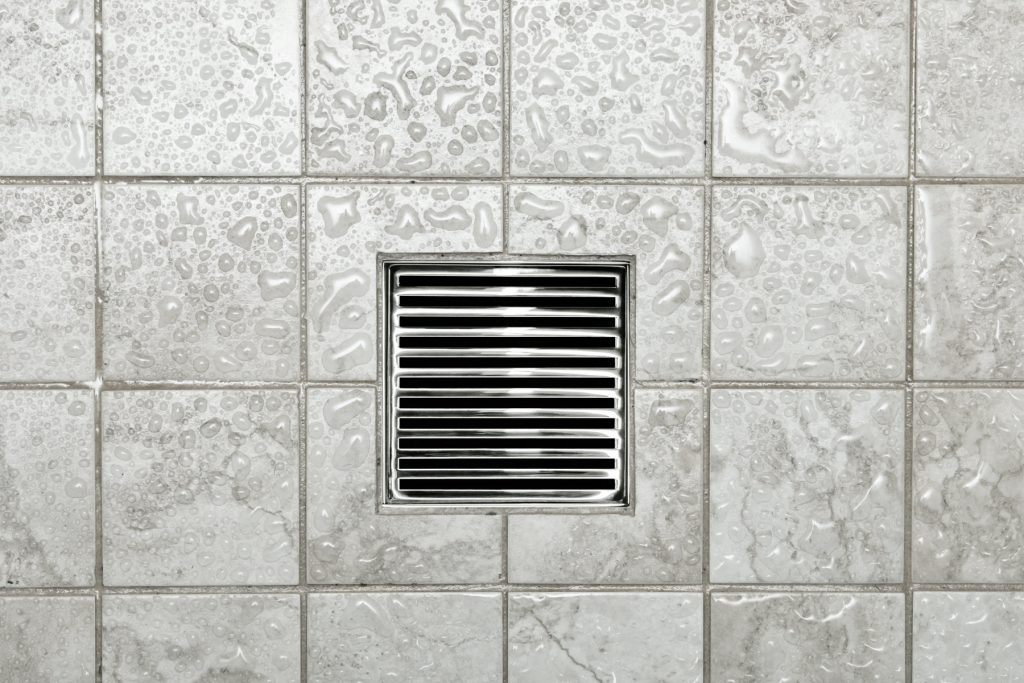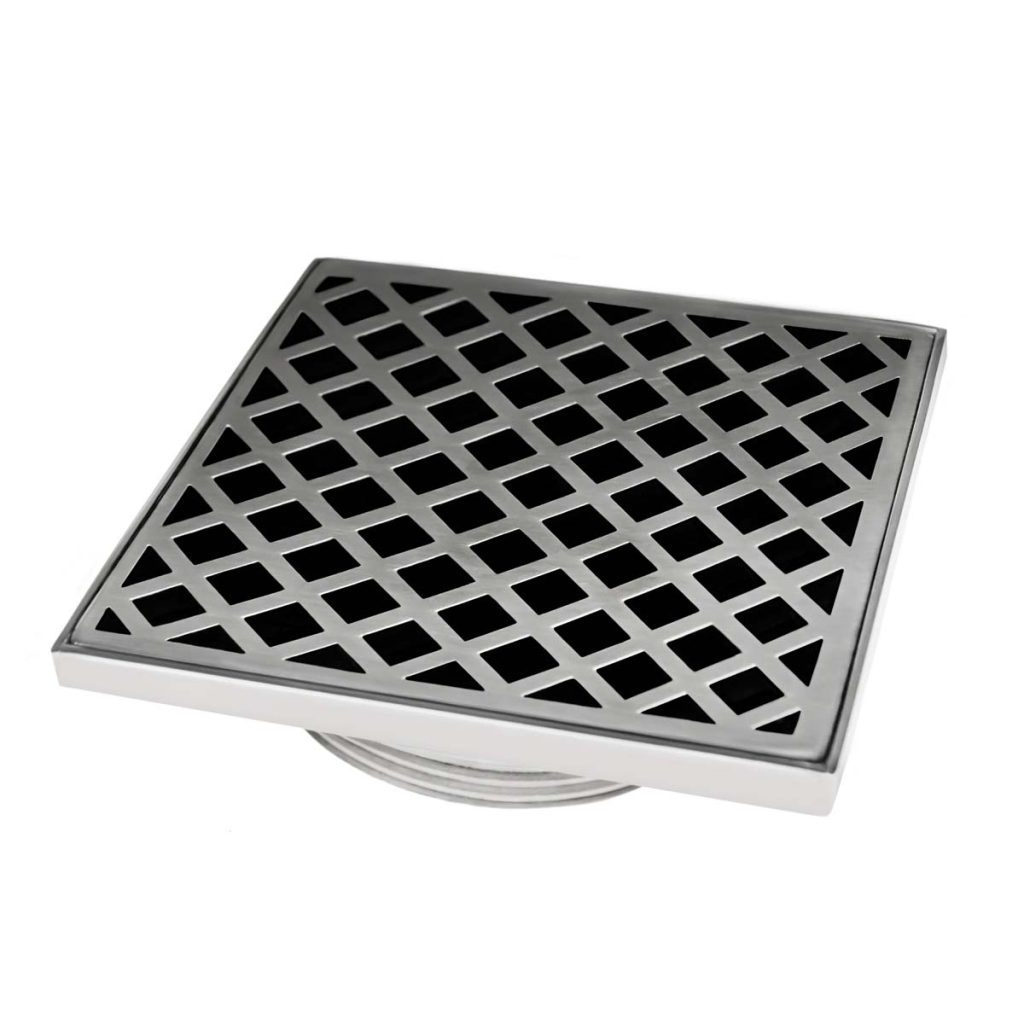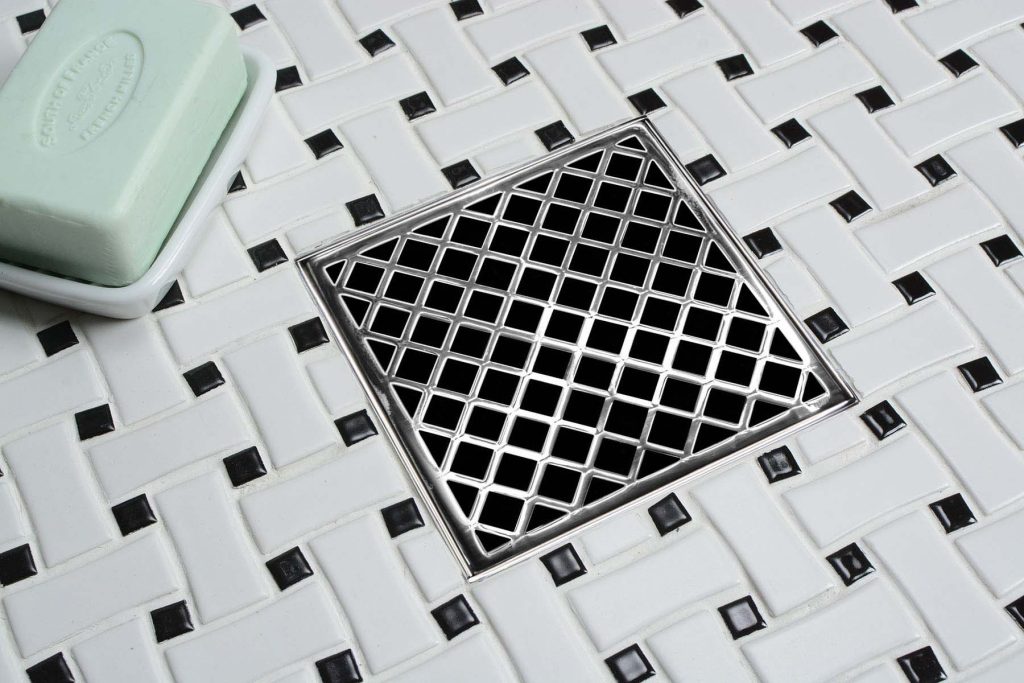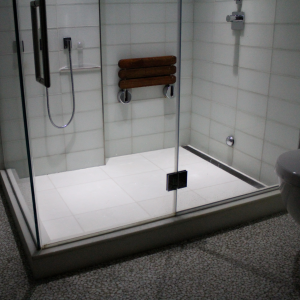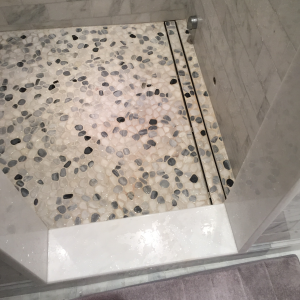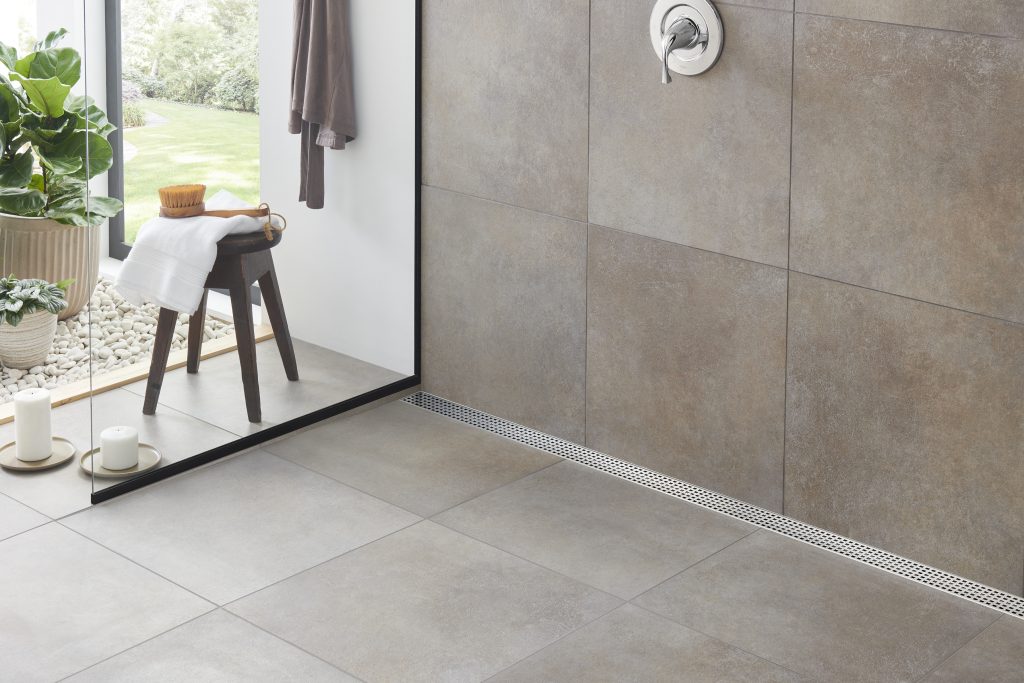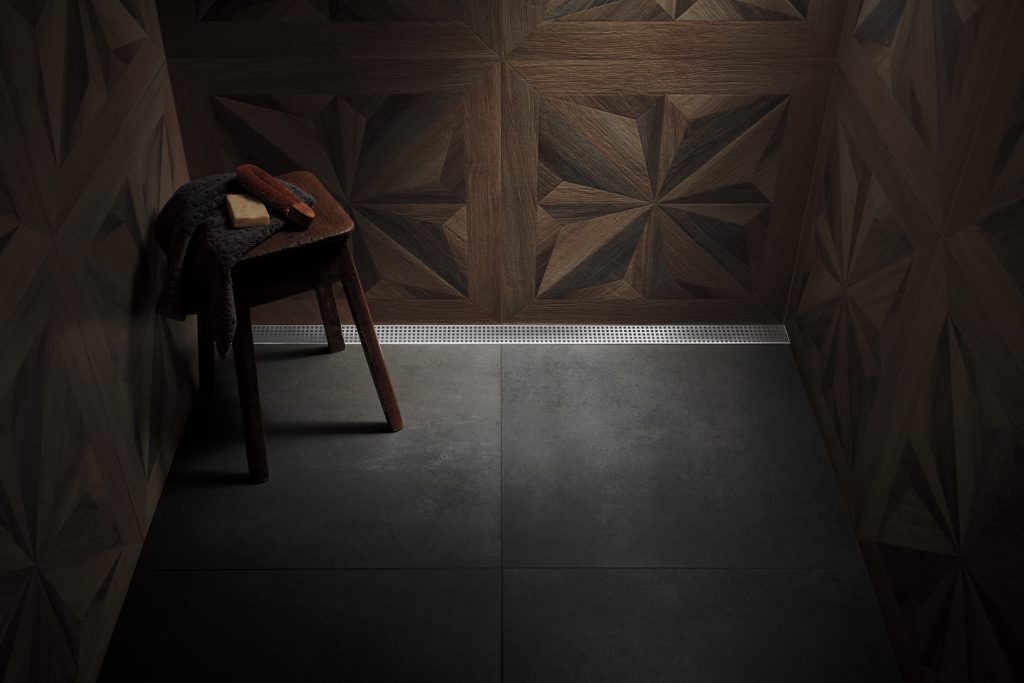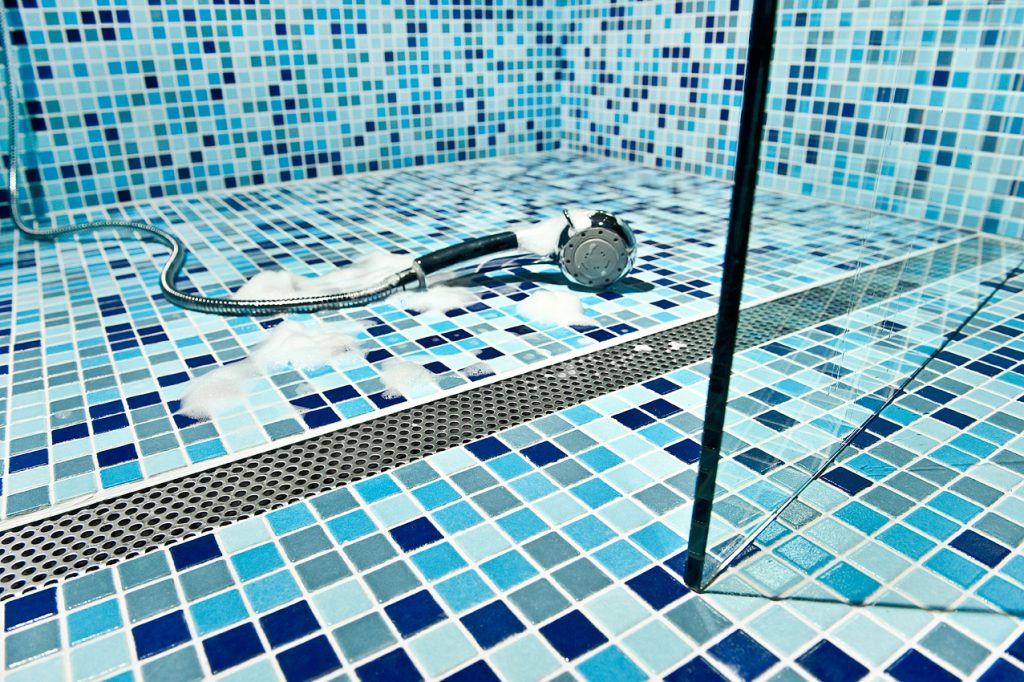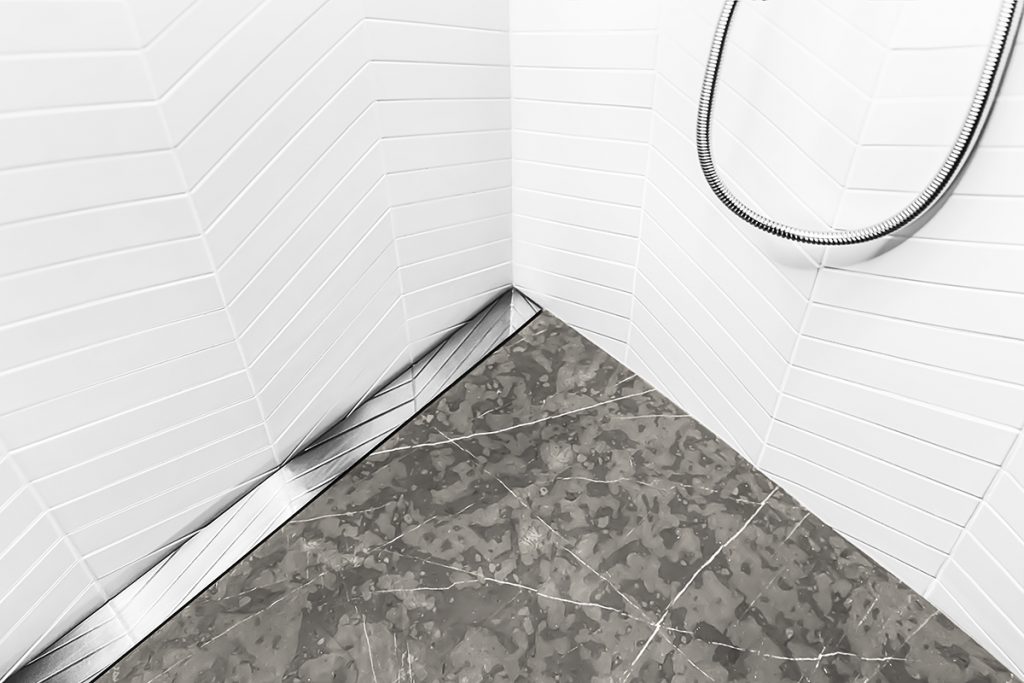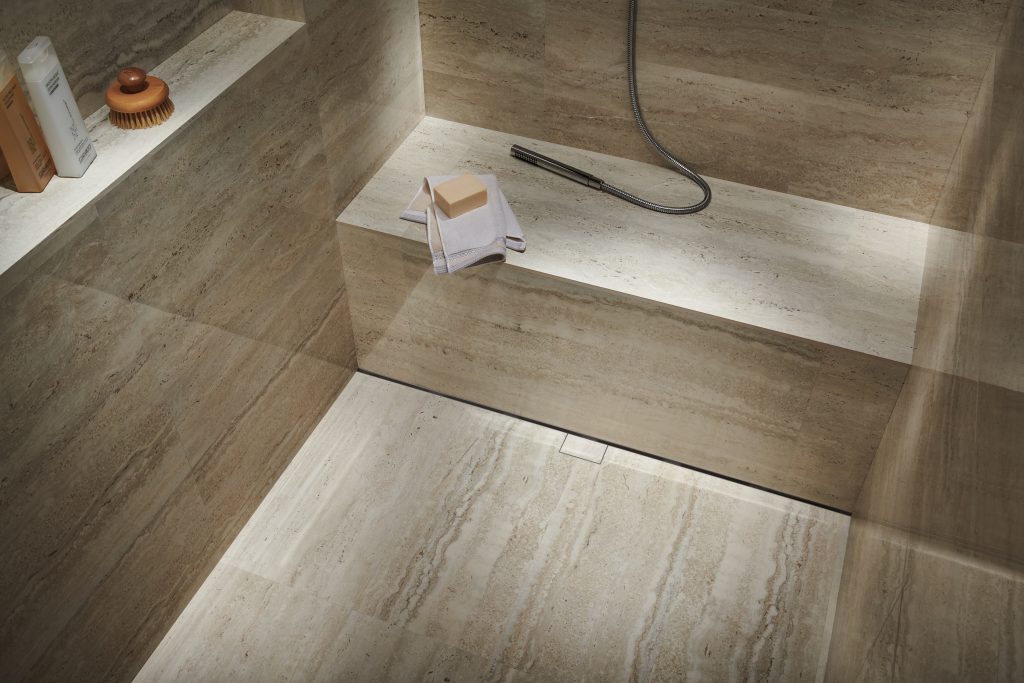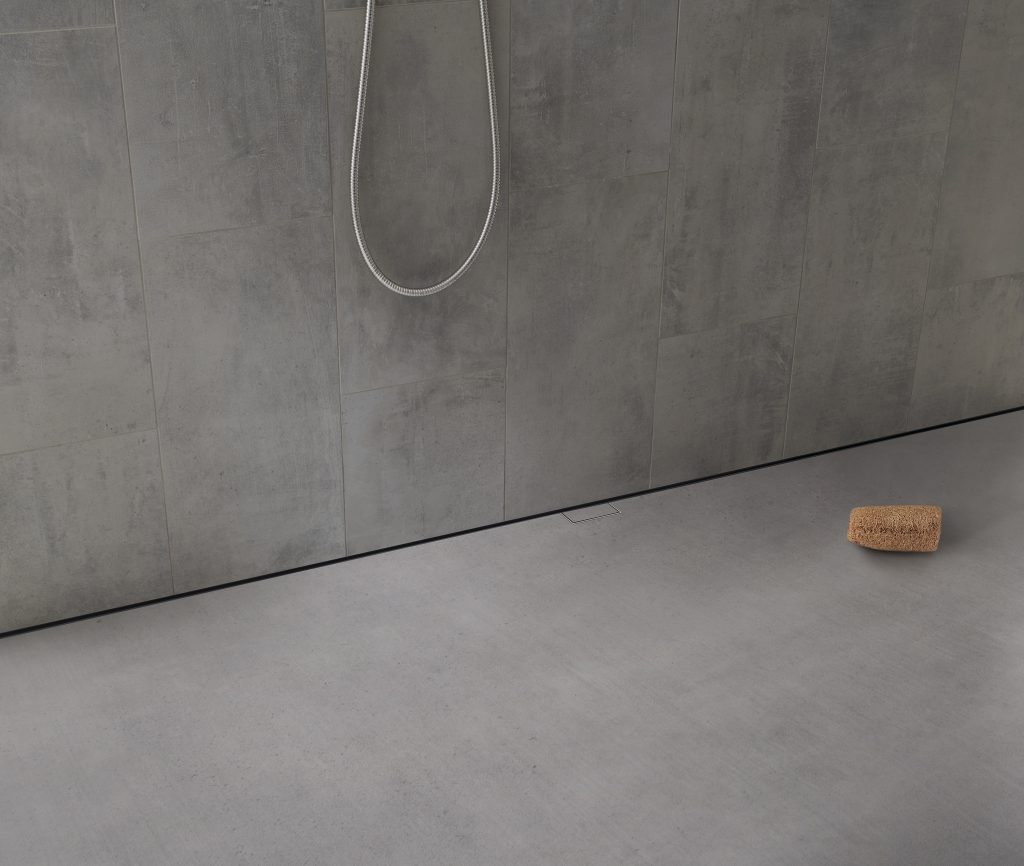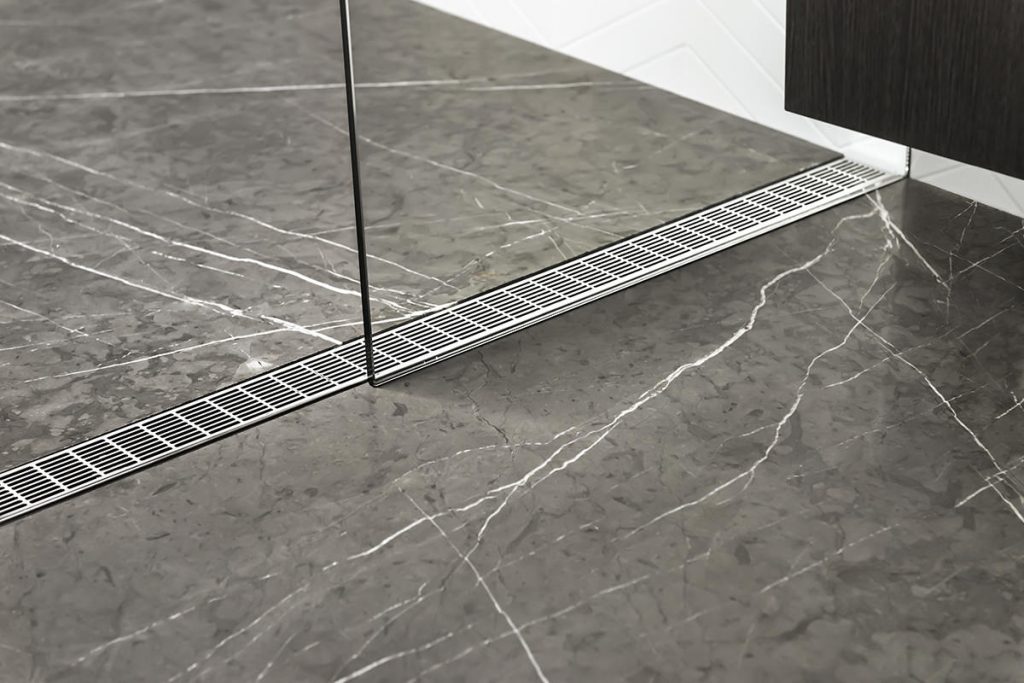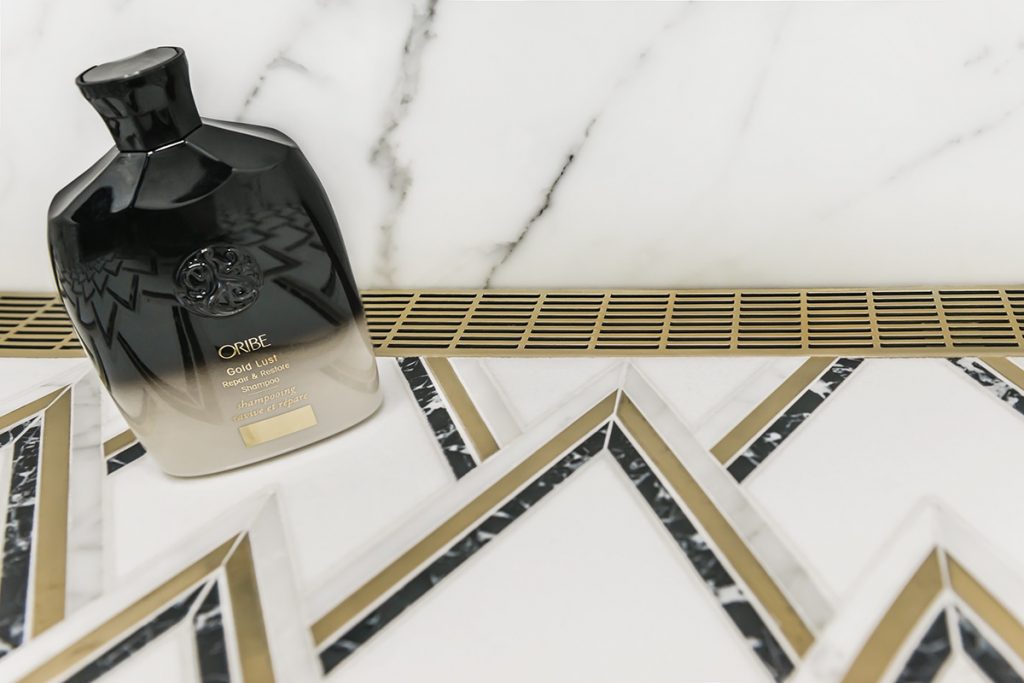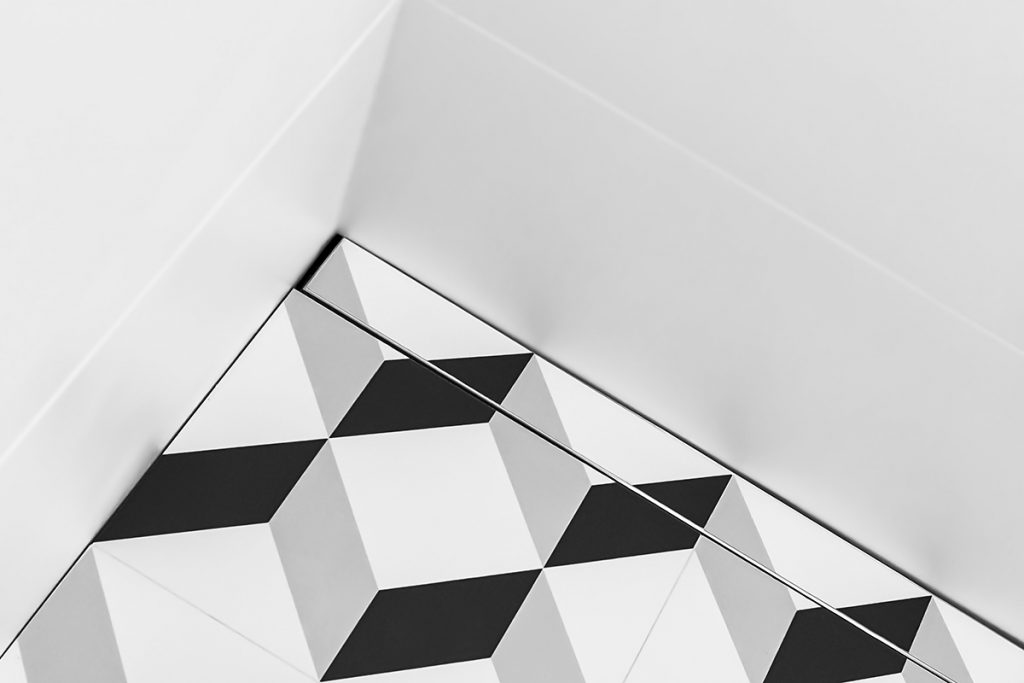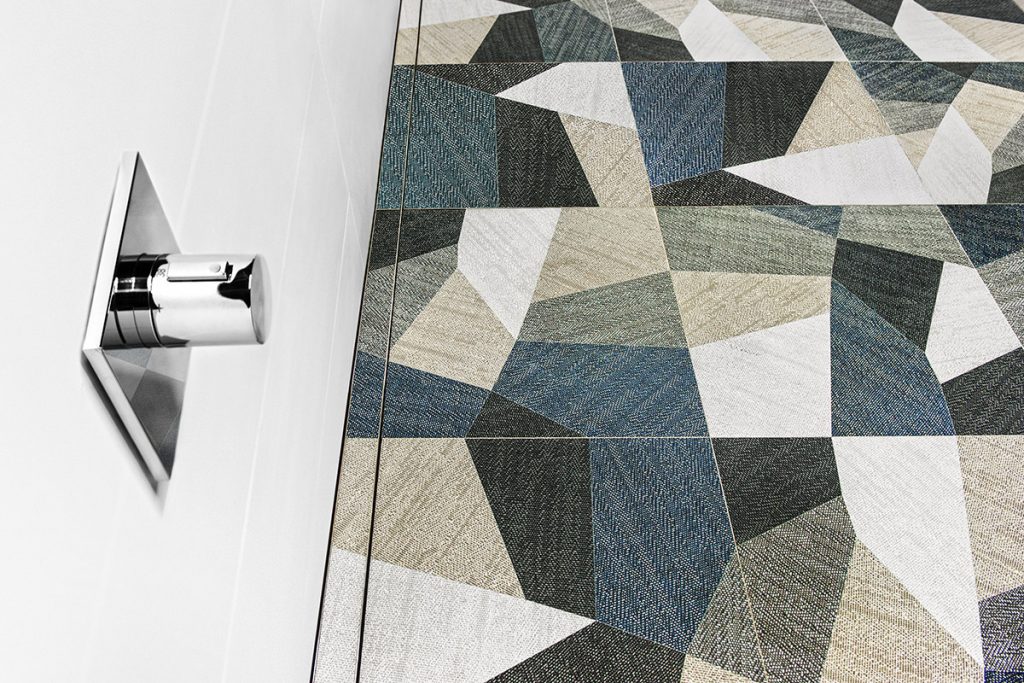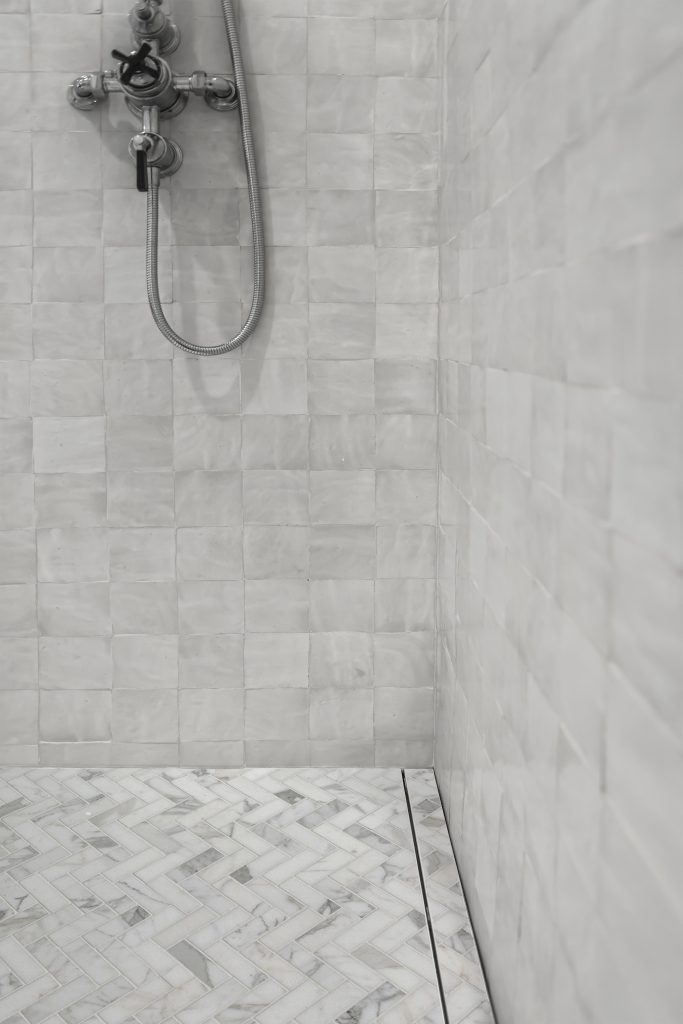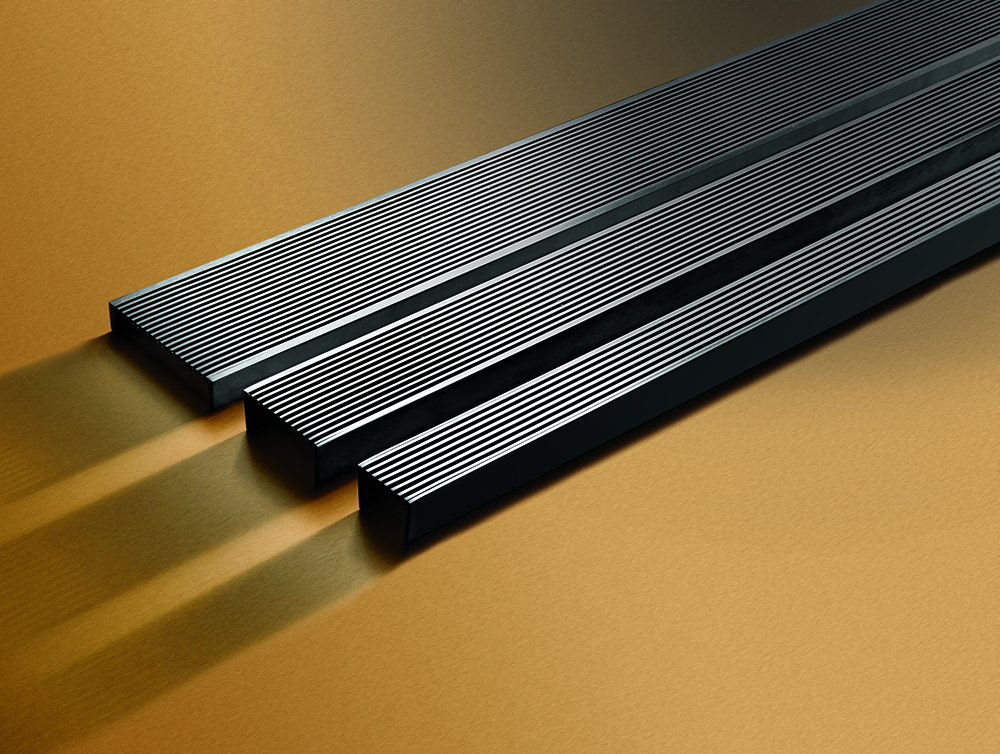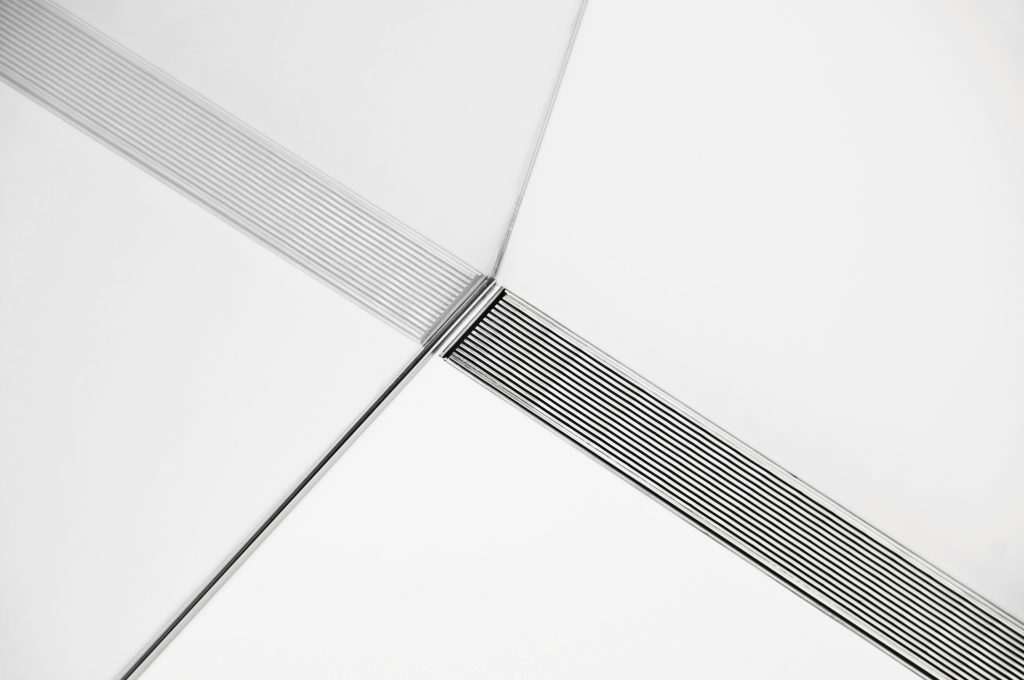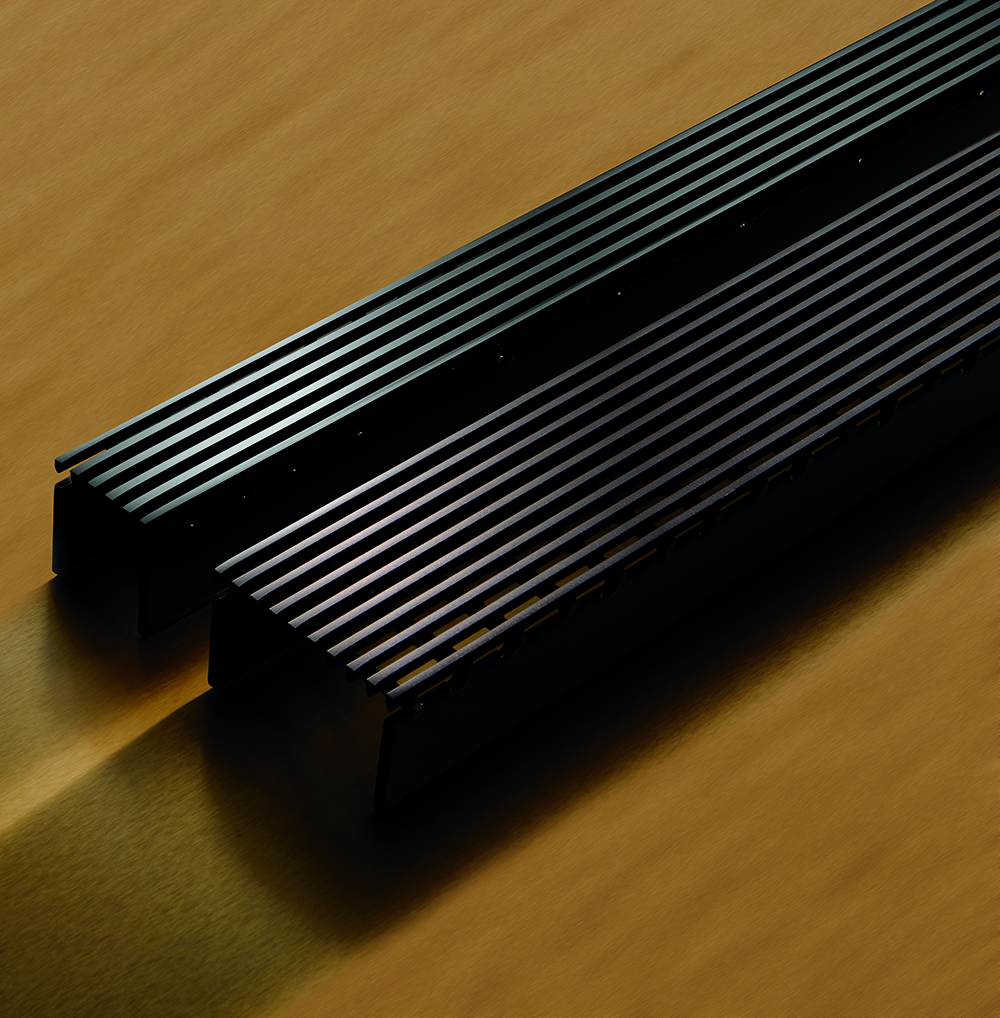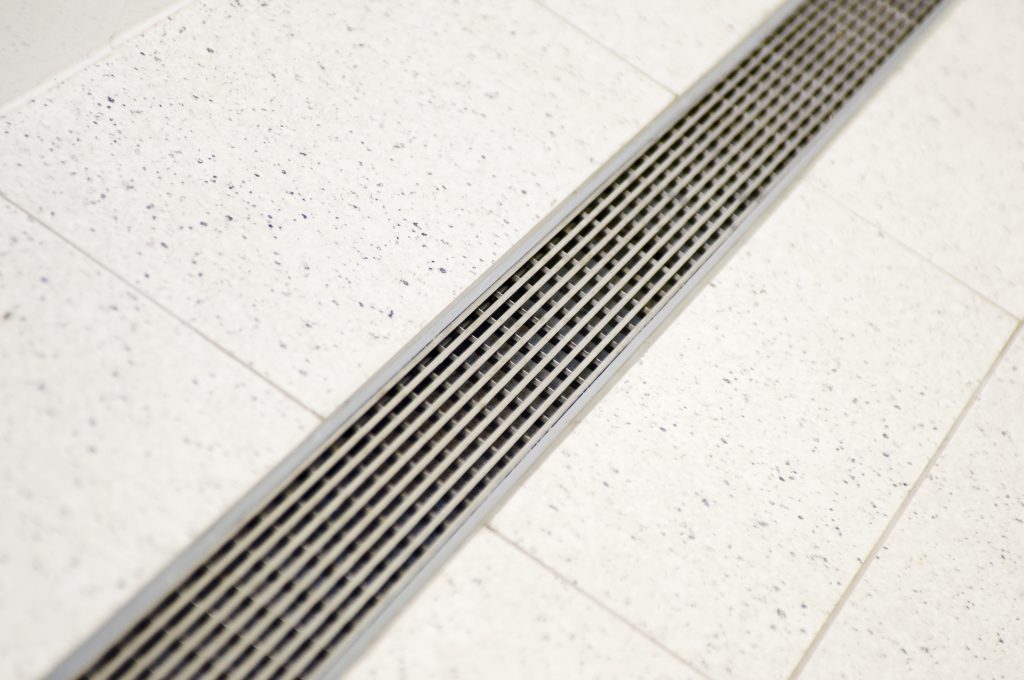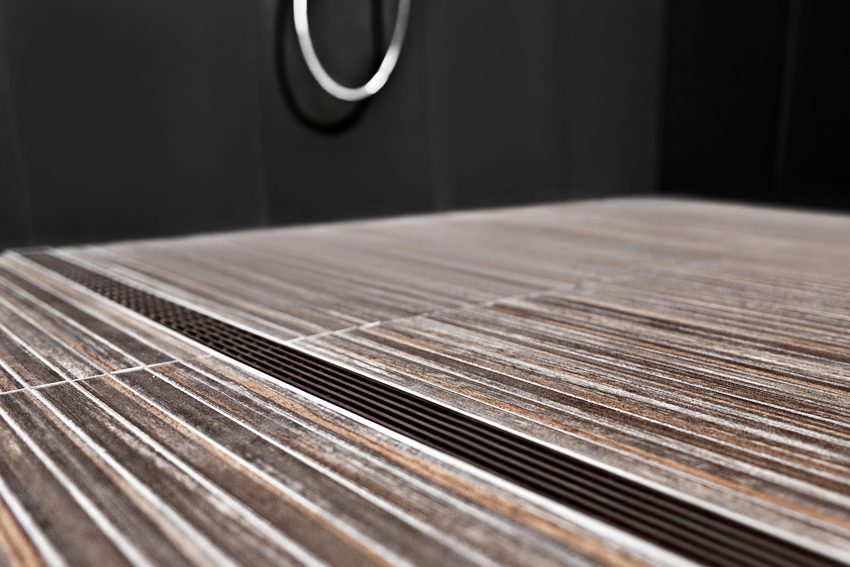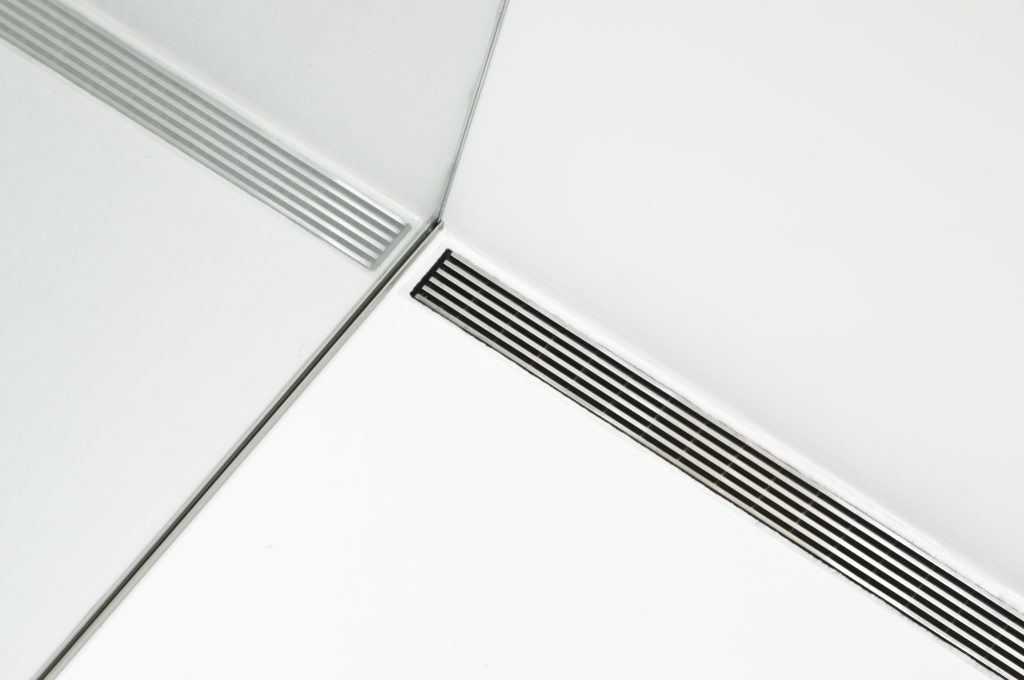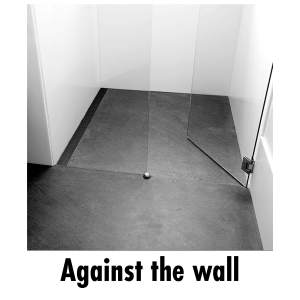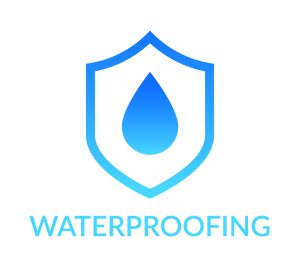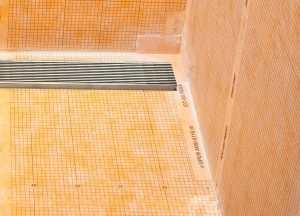Linear Drain Guide
Whether it is a barrier threshold (curb), or barrier-free (curbless/zero threshold) installation, Infinity Drain has provided general guidelines below to assist in determining the correct product choice for your project.
Site Conditions
Whether it is a renovation or new construction, choosing where to locate a linear drain is contingent on the waste line location, which may be predetermined or already installed. Moving a waste line may be possible, depending on site conditions. Infinity Drain’s Site Sizeable (S) Series provides flexibility during the installation process by allowing the outlet to be placed anywhere along the channel run. Always consult with a licensed professional.
Locating Linear Drains
A linear drain allows for the use of larger format floor tile and the ability to pitch the floor in one direction. This offers an advantage from the traditional center drain installation, where the floor must slope in four directions in order to properly drain the water.
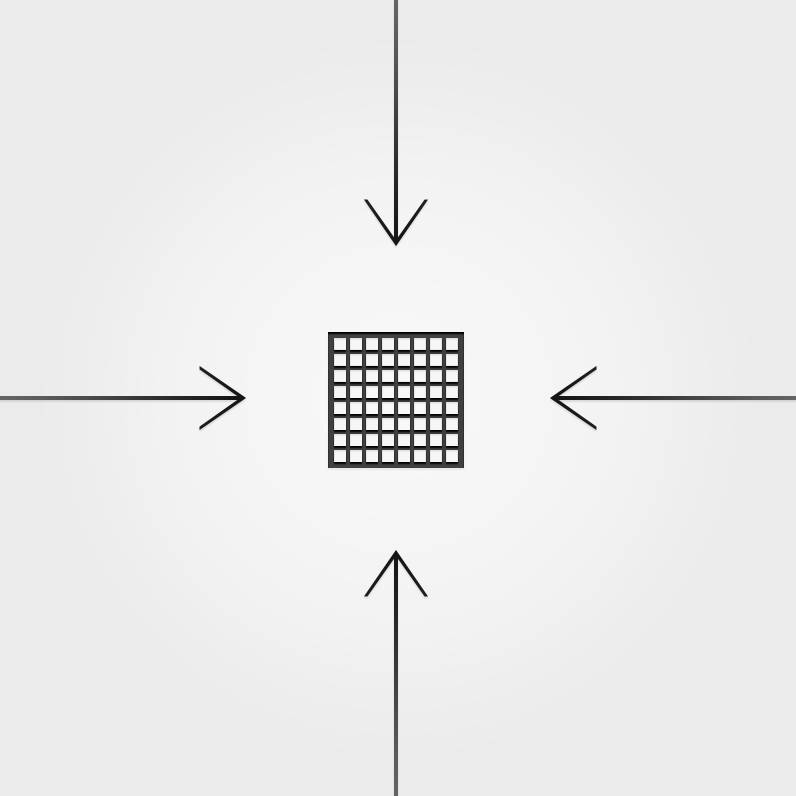
Center Drain
Slope to middle, must use small materials.
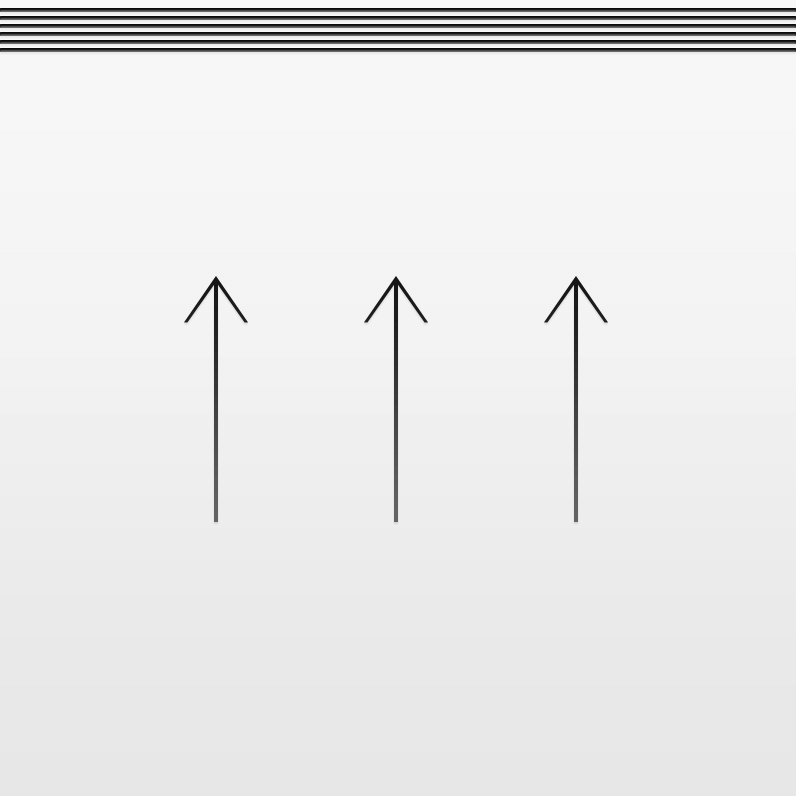
Linear Drain
Slope in one direction, use any size materials.
Type of Install
Wall-to-Wall (Fig 1, Fig 2)
One way to ensure proper drainage is to install the linear drain from wall-to-wall. The challenge of this installation is that it requires an exact dimension. Infinity Drain offers a solution to this issue with the Site Sizeable (S) Series, which allows for ”site sizing” the length of the drain by cutting the grate and channel to the exact finished wall- to-wall dimension. Infinity Drain’s [FX], [FF], [FT], [FCB] & [FCS] series can be custom fabricated for the exact desired length and outlet location.
Against a Wall (Fig 3)
Infinity Drain’s Fixed Flange ([FF] & [FCS], bottom outlet and Side Outlet [FT], horizontal or side outlet) Series are designed for flush against the wall installations. These series are intended for use with liquid or fabric type waterproofing to tie into the wall board. They are available with a center outlet location and in set lengths of 24″, 32″, 36″, 42″, 48″, and 60″. Custom sizes and outlet locations are available.
The (S) Site Sizeable and Fixed (FX) Series require a traditional clamping drain body for PVC/Vinyl Liner, Rubber Liner, Lead Pan, Copper Pan, Fiberglass, and Hot Mop type waterproofing. The diameter of the traditional clamping floor drain body creates a challenge for flush against the wall installations. If using these series Infinity Drain recommends using our CDI 22, CDIH 22, CDA 22, or CDP 22. This drain body is specifically designed for against the wall installations.
Curb or Curbless (Fig 3, 4, and 5)
Deciding between a barrier threshold (curb) or barrier-free (curbless) installation is critical when a linear drain is being considered. Please consult a licensed professional when determining which installation is possible. For more information please visit our Barrier-free Drains page.
Threshold Installation (Fig 4 and 5)
For threshold installs, we recommend the drain run exactly wall-to-wall to block any water from leaving the shower or wet area. We do not recommend linear drains less than 2” wide or Tile Insert Frame linear drains for threshold installations without a curb due to the lack of channel width needed to sufficiently catch the water.
Barrier-Free Installation (Fig 4 and 5)
Installing a shower drain without a curb, barrier, or threshold creates a seamless look with easy accessibility to the wet area. To achieve an ideal installation, floor heights should be equal between the shower area (wet area), outside the shower (dry area), and next room. View our barrier-free suitable drains.
Flow Rates
There are many variables that influence flow rates and how drains perform. Our listed GPM (gallons per minute) on Infinity Drain products are based on having a “head of water” that is traveling at 1⁄2” high. Different head heights will change flow rate. Without calculating a specific install, use our flow rate as a general guideline. The following variables should be considered when choosing and locating a linear drain.
Variables to Consider
– What is flow rate of the shower valve? (i.e. how much water is being drained?)
– Are there multiple shower valves?
– What is the water pressure or PSI of the site location?
– How many water features? (i.e. shower heads, hand shower, body sprays, etc.?)
– Will the fixtures operate at the local plumbing code’s legal gallons per minute?
– Will the flow restrictors be removed from the fixtures?
The answers to the above questions fall into the equation of determining the proper type of drain, outlets necessary, and location of the drain. These variables can vary drastically from installation to installation, and because of this, it is difficult to have an absolute flow rate. Most US residential installations use a 2” waste line, which has an average capacity of 9 GPM at 1⁄2″ head of water, assuming proper venting. Adding additional 2″ outlets and tying them to a 3″ waste line will significantly increase the flow rate to 21 GPM. Infinity Drain’s 3″ outlet products have an average capacity of 21 GPM.
Outlets
Infinity Drain products are intended for both indoor and outdoor use. For indoor installations, we recommend an outlet every 60”. For example, on a 72” length drain, if the outlet is offset 5” to one side, we would recommend a secondary outlet, especially for a zero-threshold installation. Our 72″, 80″, and 96″ kits come standard with two outlet assemblies. The Site Sizeable (S) Series can add additional outlet components to the kit. Custom fabrication with multiple outlets is available on the [FX], [FF], [FCS], [FCB], and [FT] linear drain Series. Outdoor installations: Outlet frequency is dependent on drain application and geographic location. Please contact us with questions regarding your specific installation.
Waterproofing
Waterproofing technique can help determine which linear drain series to specify. If using a traditional type of waterproofing, the professional will typically build a shower pan (wet waterproofed area) with PVC, Vinyl, Lead, Hot Mop, Copper or Fiberglass material. Infinity Drain’s [S] and [FX] Series are recommended. If using a modern type of waterproofing such as liquid membrane or fabric sheet, the professional can more easily waterproof over a greater floor area to build a barrier free or zero threshold installation. Infinity Drain’s [FF], [FCS], and [FT] Series are recommended for this type of waterproofing.
Using a Clamping Floor Drain/Tile Floor Drain:
PVC Membrane/Vinyl Liner (Polyvinyl Chloride)
A plastic sheet available at most plumbing suppliers and sold in rolls of 4′, 5′ and 6′. The membrane is layered between mortar beds and the corners are folded to create the shower pan liner. If the shower pan area is larger than the roll dimension, it must be seamed or joined together.
Lead Pan/Copper Pan
A metal sheet that is formed to create the shower pan area. The membrane is layered between mortar beds and the corners are folded to create the shower pan liner. If the shower pan area is larger than the sheet dimension, the lead material must be welded together. This install is more common in metropolitan areas where code may require a metal pan.
CPE Membrane (Chlorinated Polyethylene)
A rubber sheet available at most plumbing suppliers and sold in rolls 4′, 5′ and 6′. The membrane is layered between mortar beds and corners are folded to create the shower pan liner. If the shower pan area is larger than the roll dimension, it must be seamed or joined together. CPE Membrane is also branded as Chloraloy® by Noble.
Hot Mop (Tar)
Heated liquid tar is applied or ”mopped” on the shower area to create the shower pan and is similar to waterproofing a roof with tar. This installation is most common in Southern California. Similar to fiberglass waterproofing.
Using a Bonded Flange:
Liquid
Roll or paint-on liquid membrane that can be applied on floors, walls, and ceilings and bonds directly to the drain flange. The total install time is shorter than traditional waterproofing methods and typically saves 2 to 3 days. Tile can bond directly to waterproofing.
Fabric Sheet
Sheet membrane that bonds directly to the drain flange with an adhesive and is sold by most tile suppliers. Corners (in and out) are available to avoid folding. If the shower pan area is larger than the roll dimensions, it must be seamed or joined together. Tile can bond directly to waterproofing.

